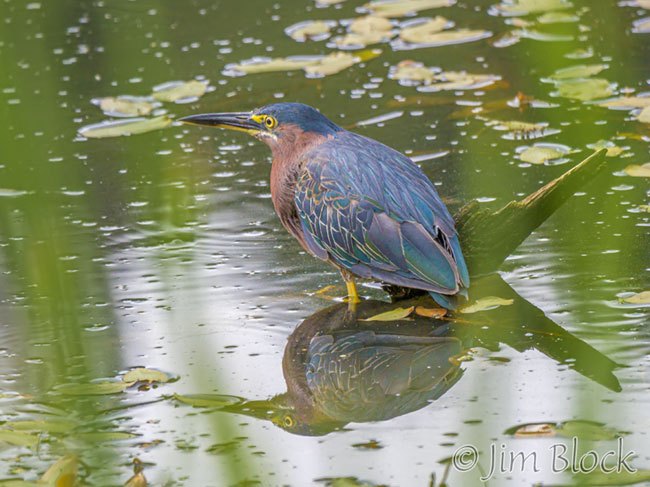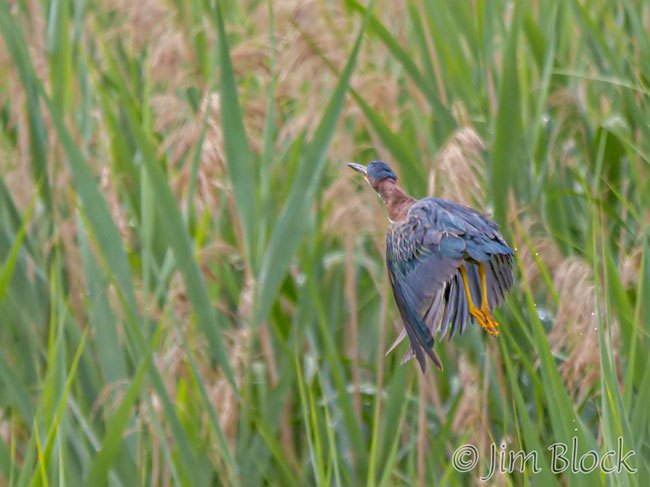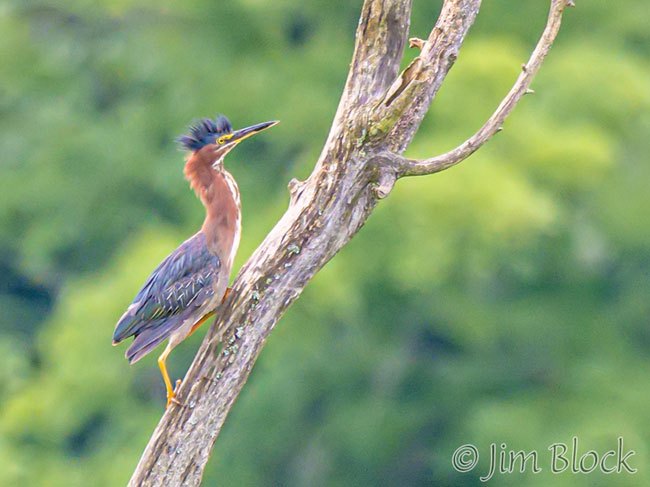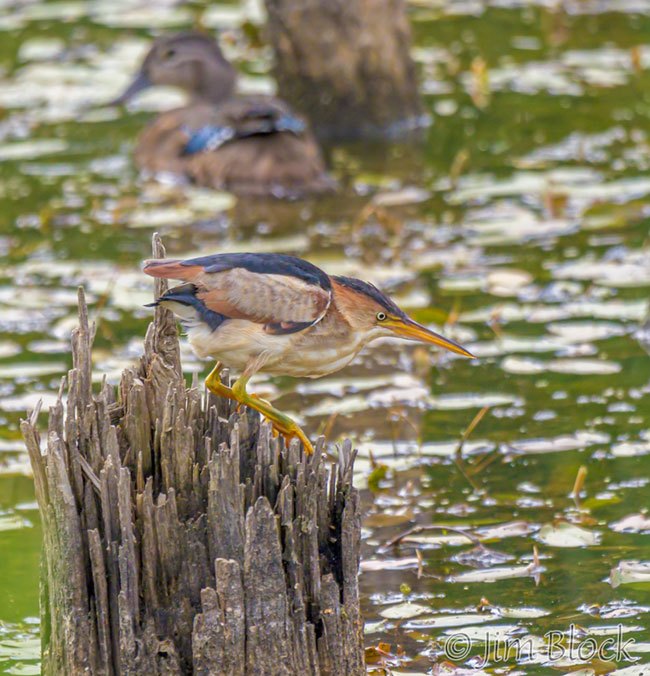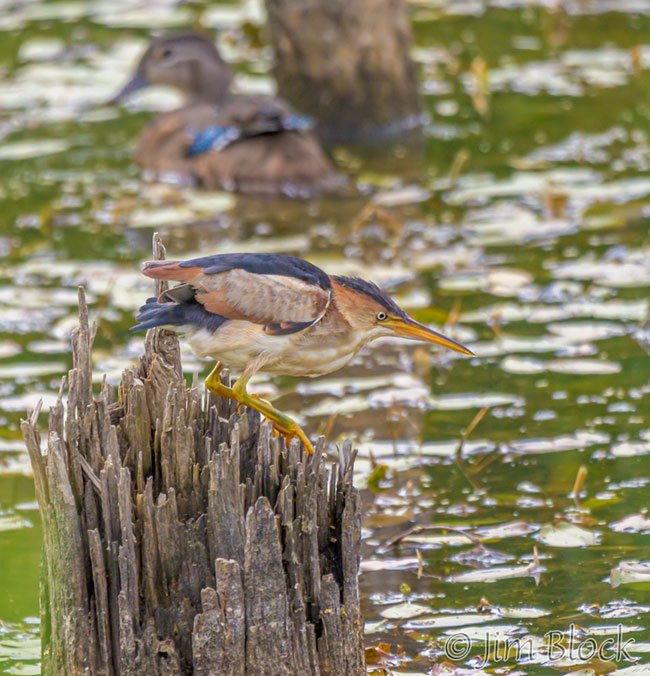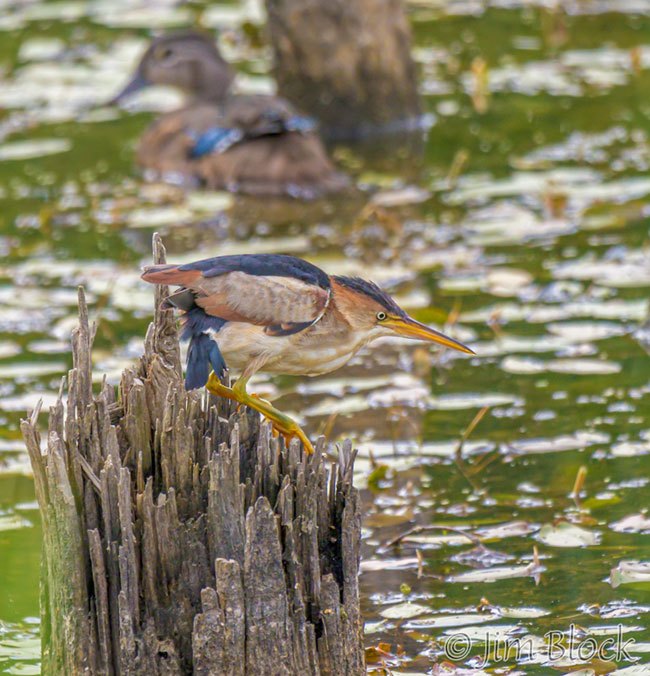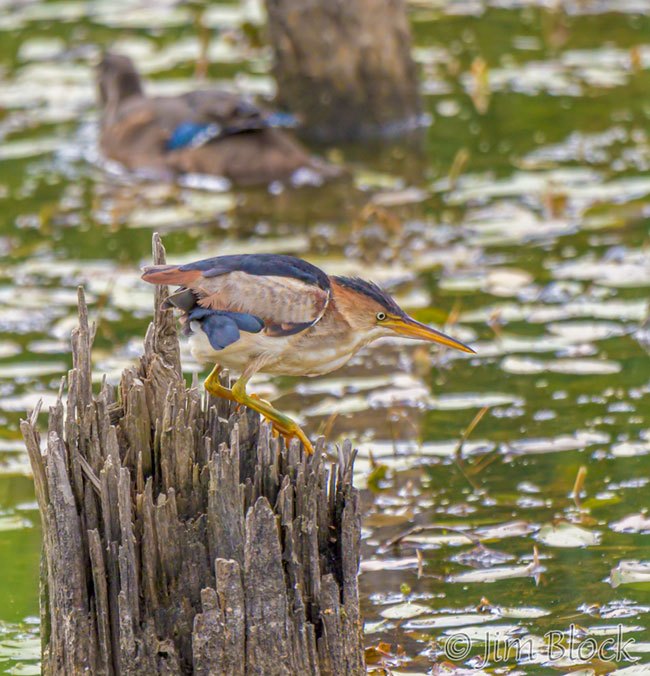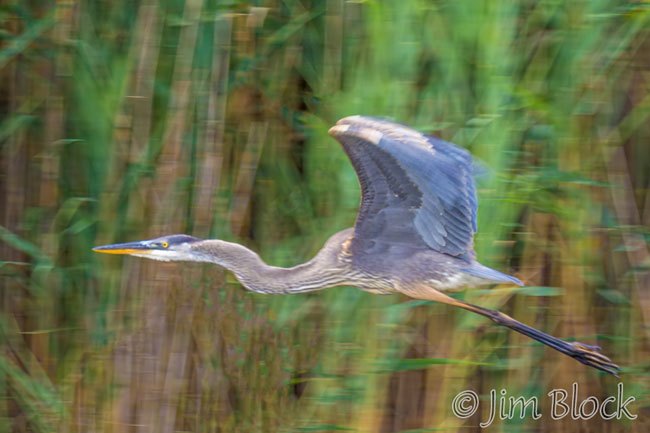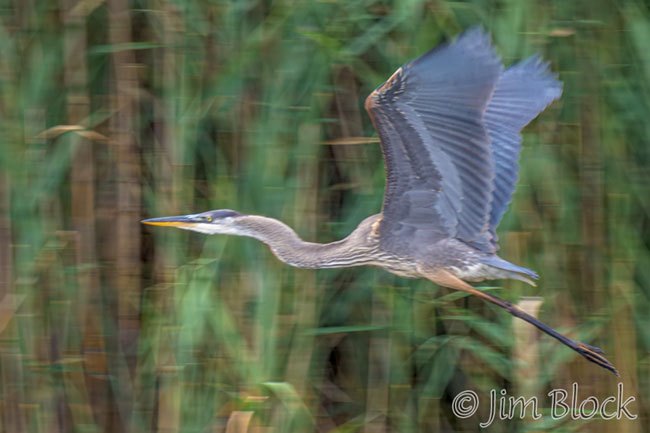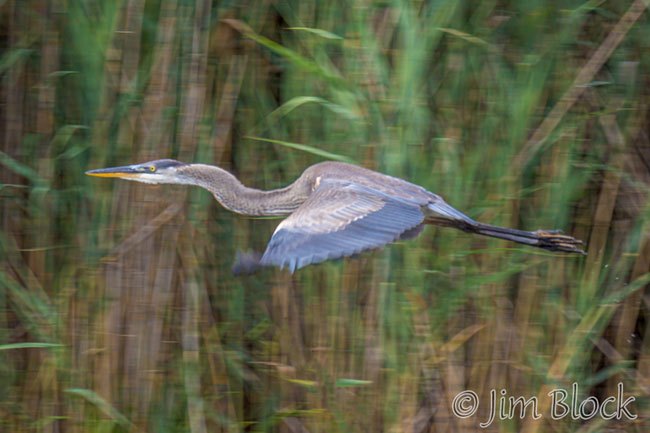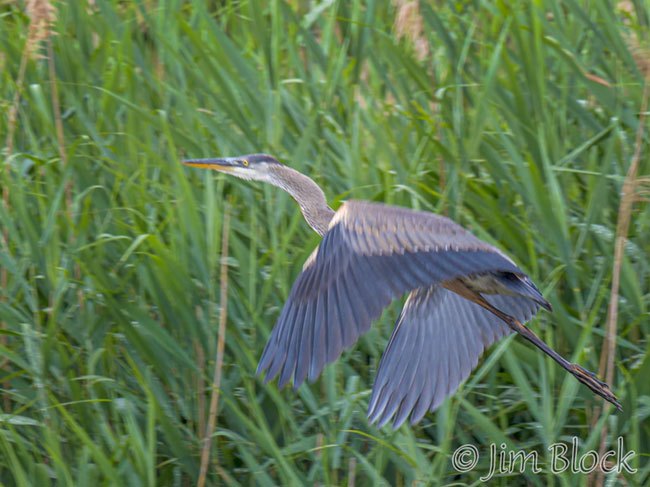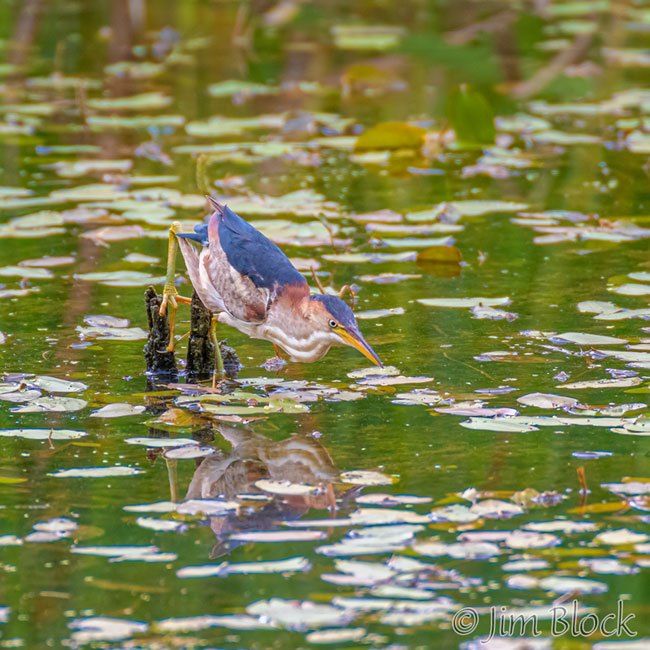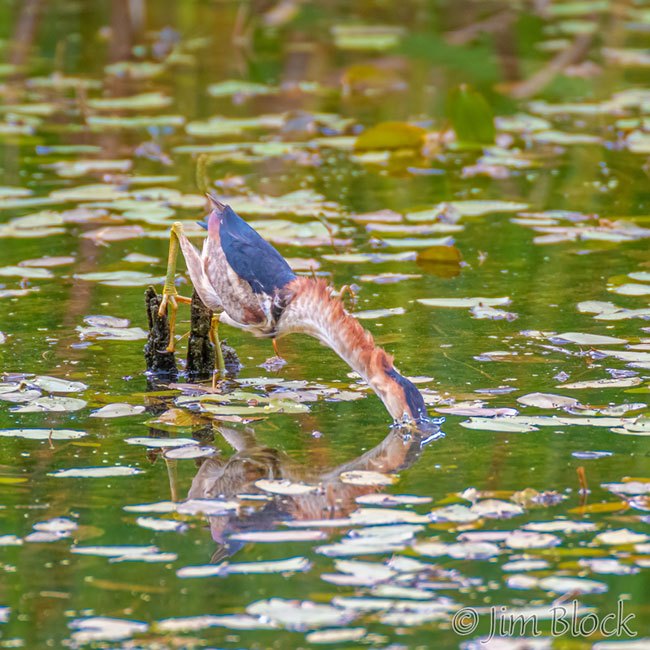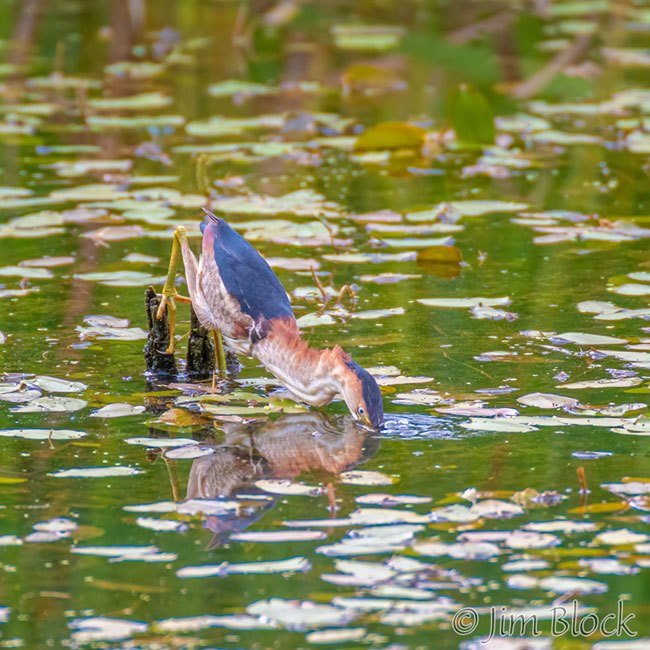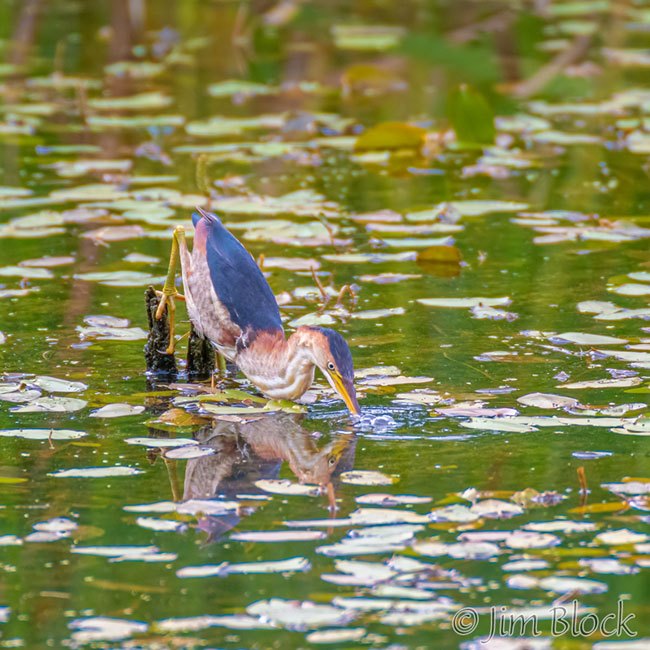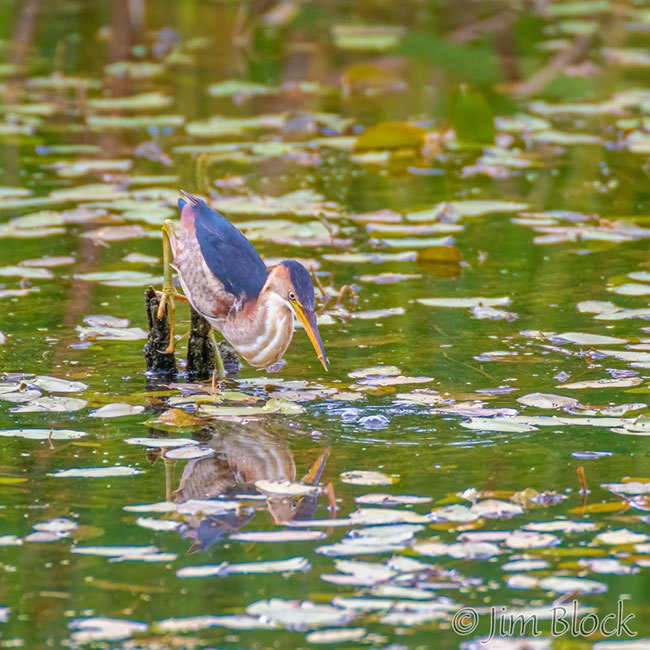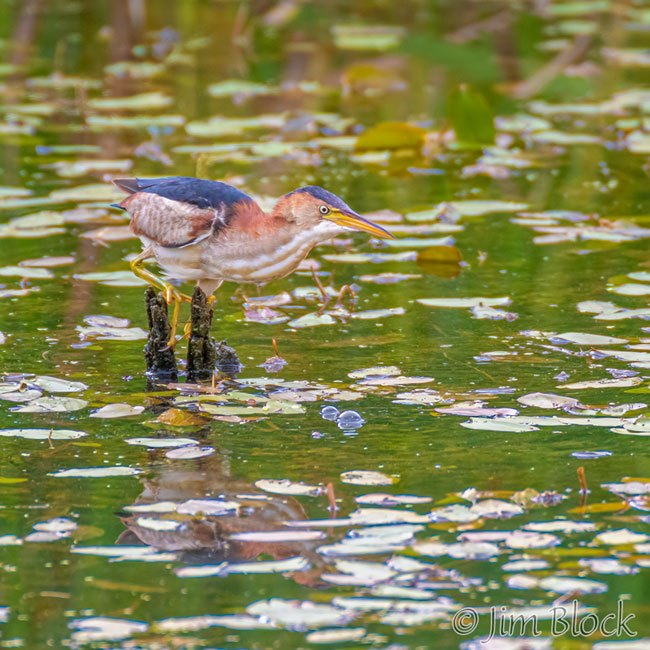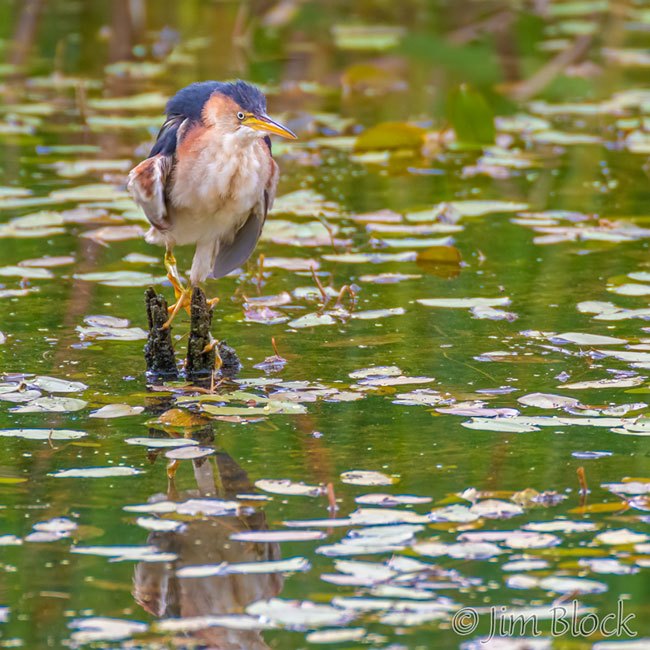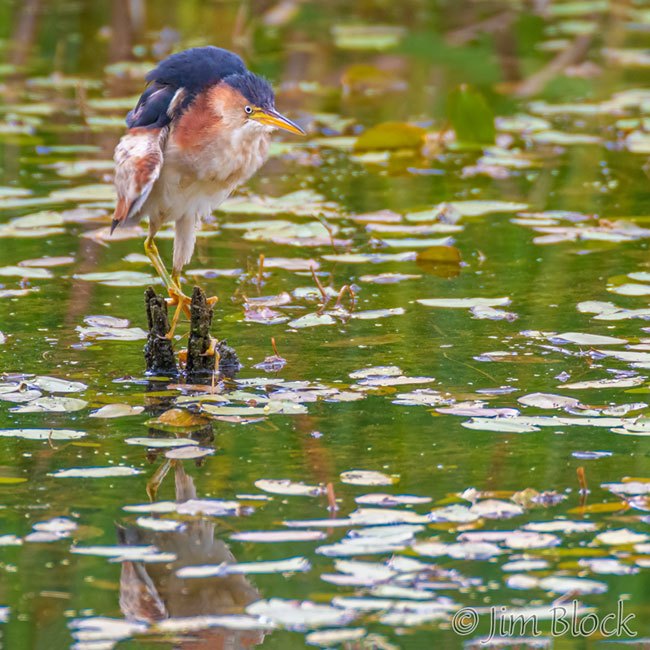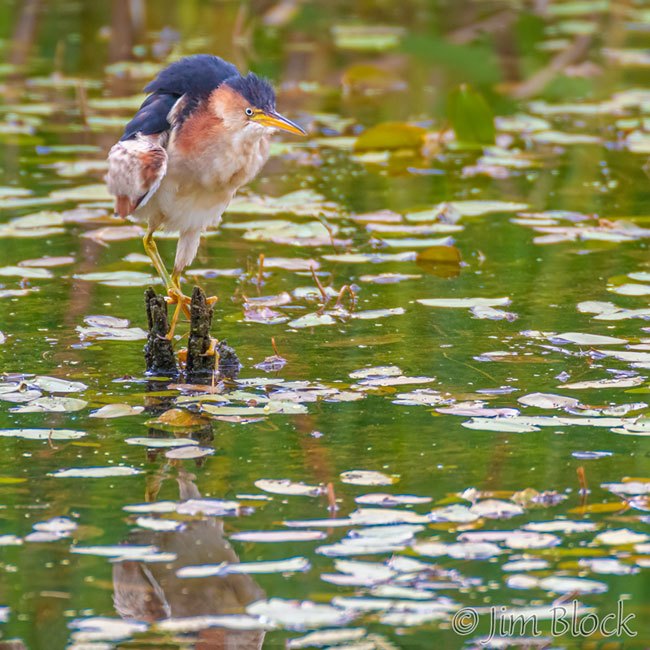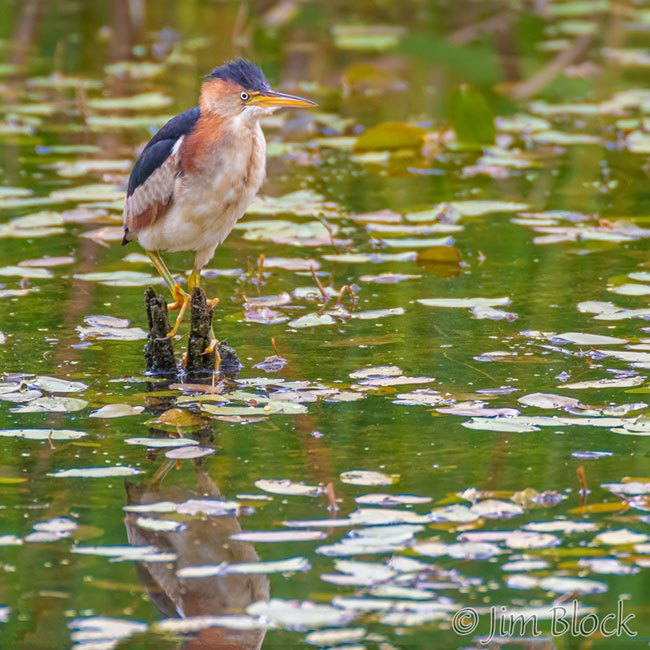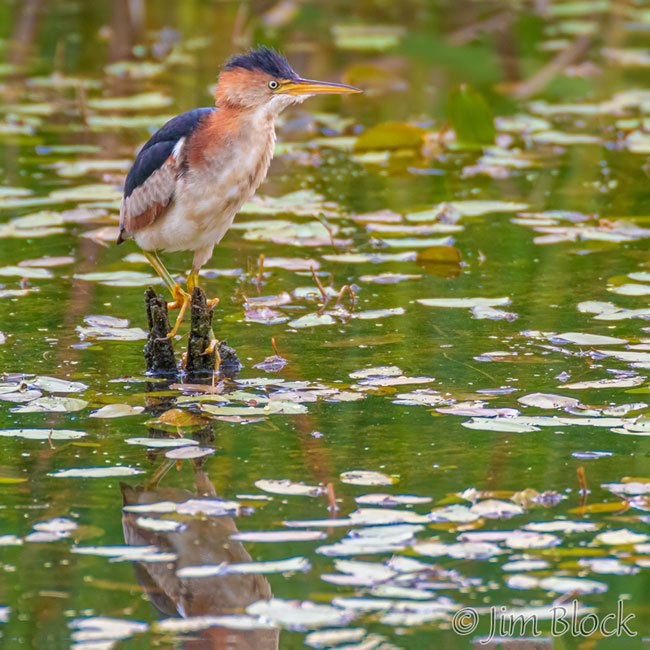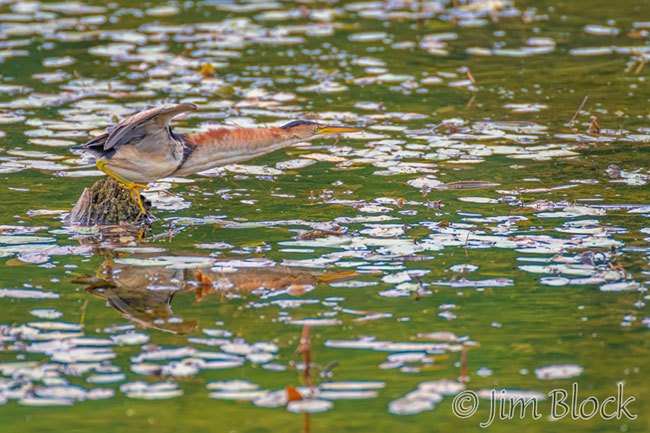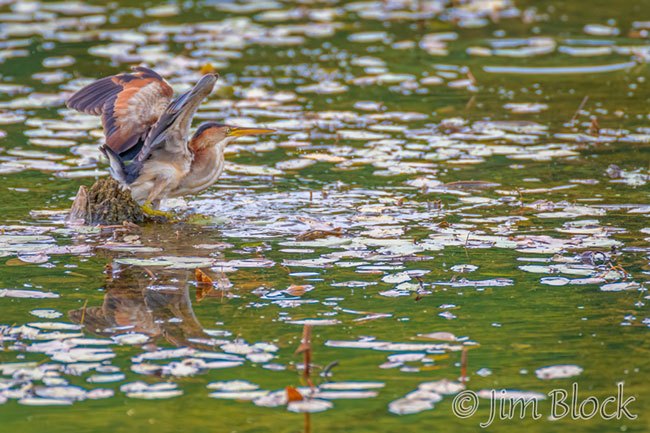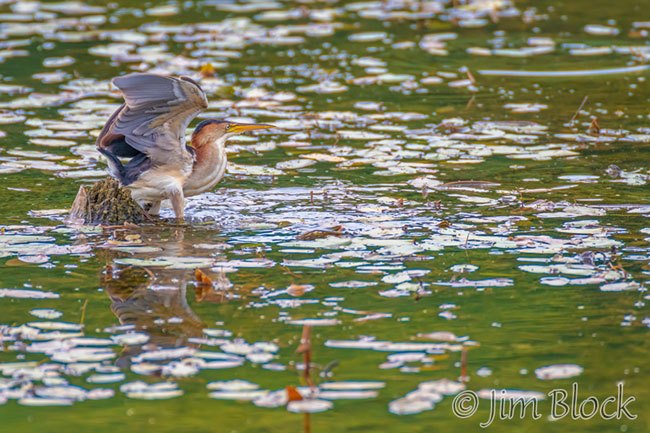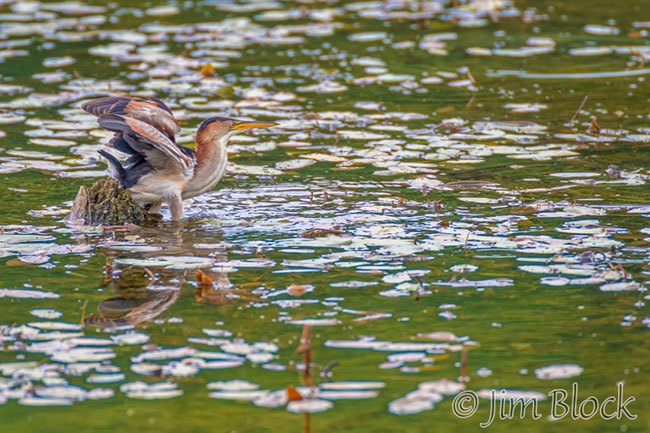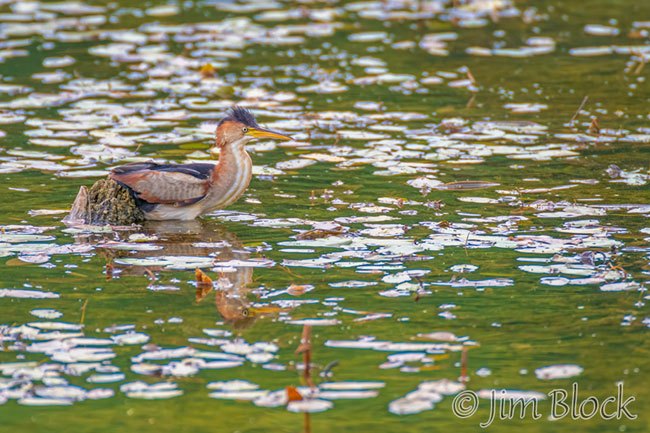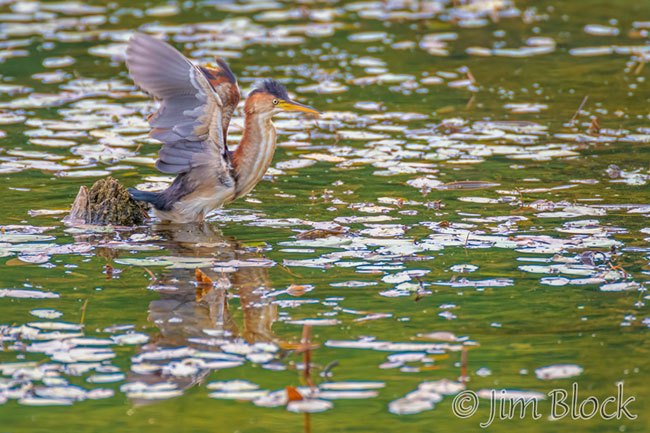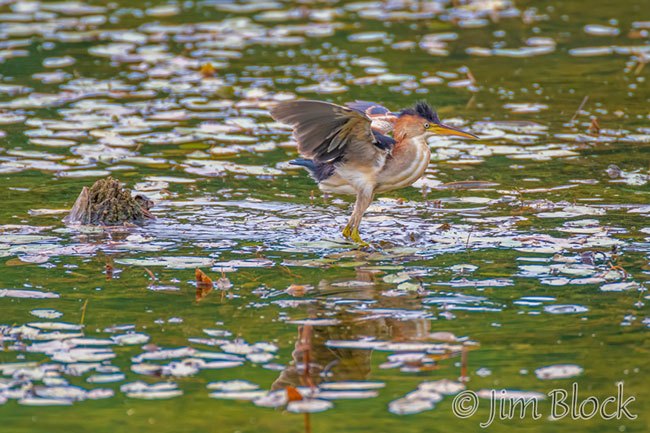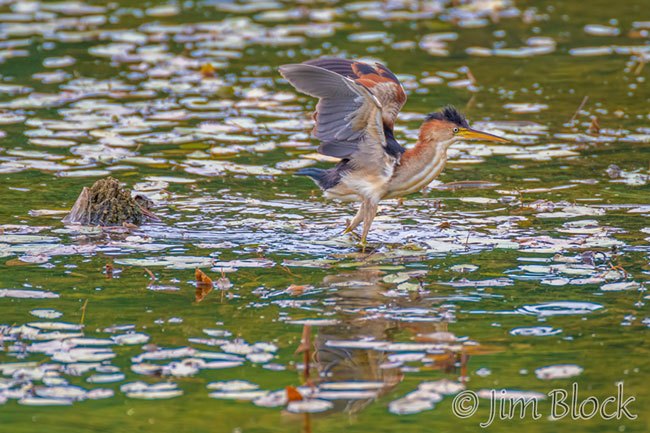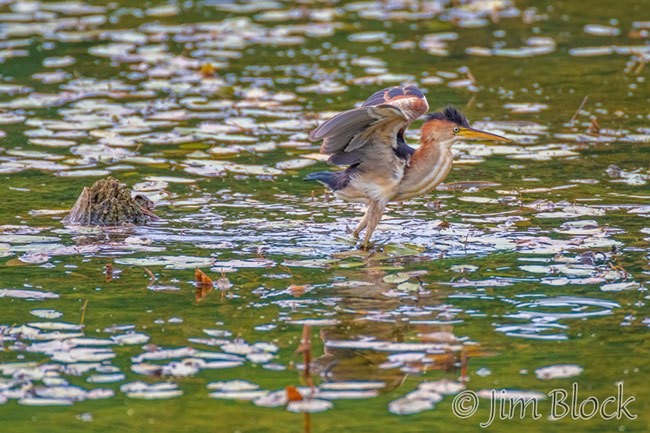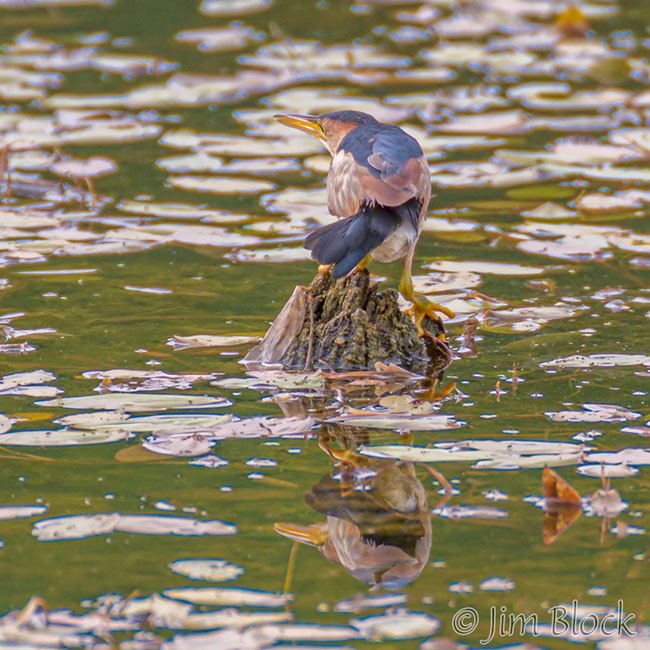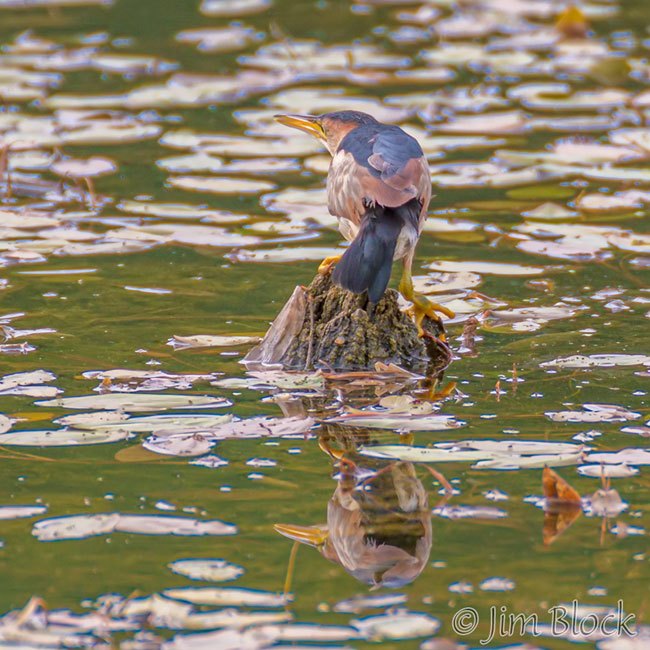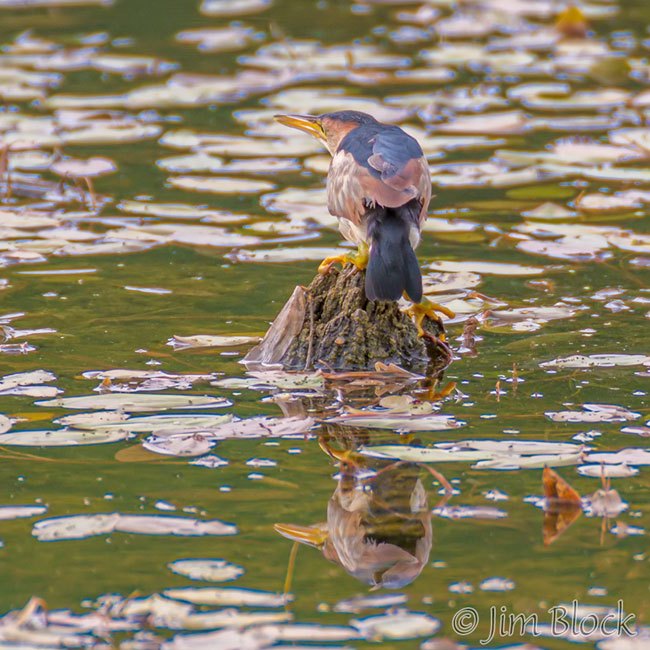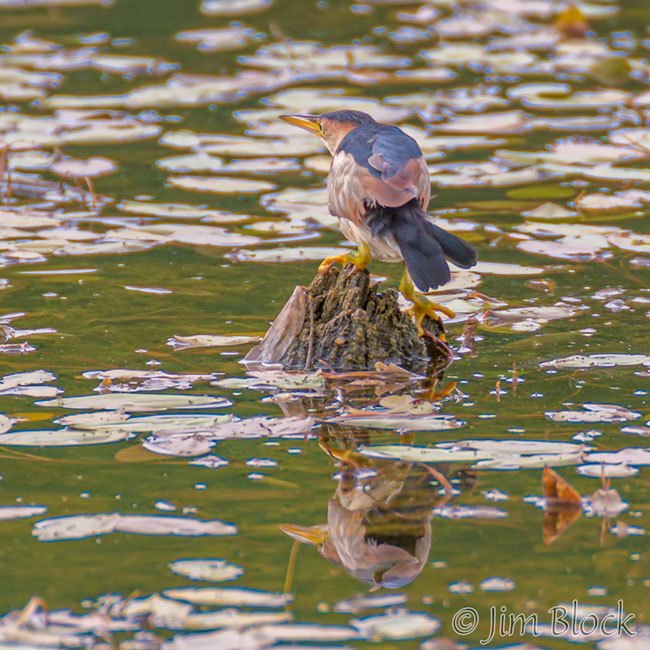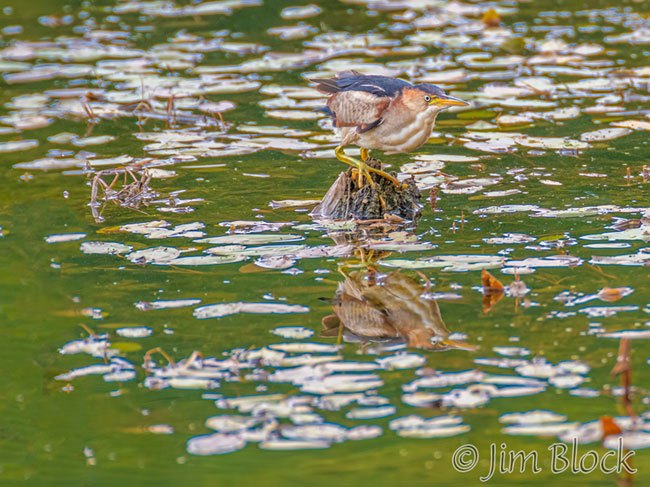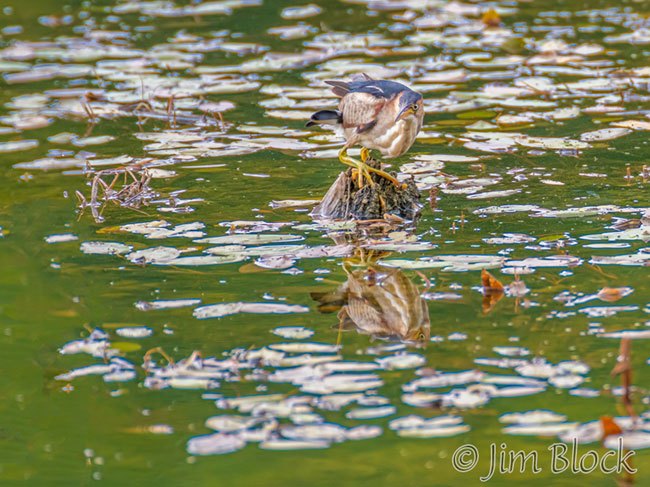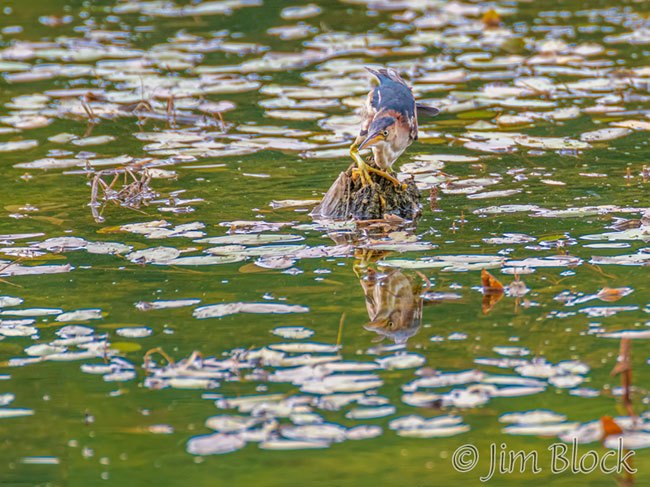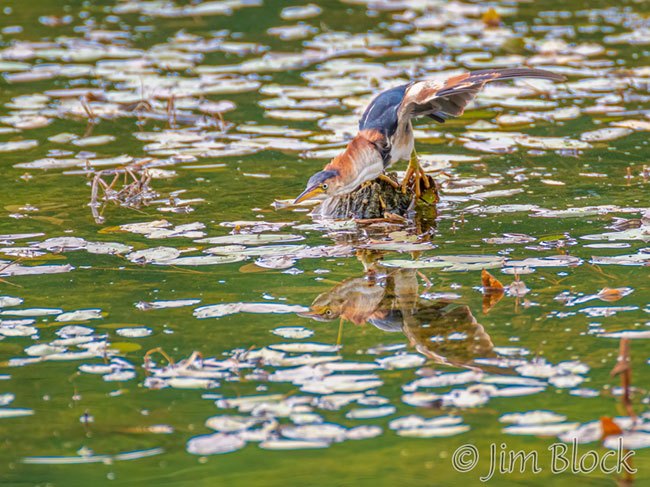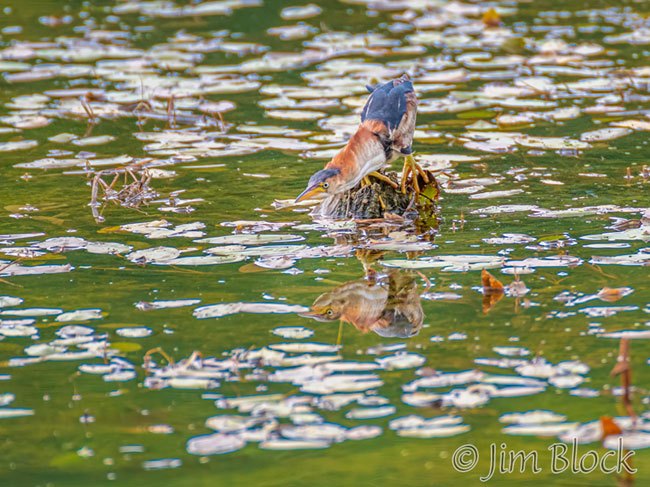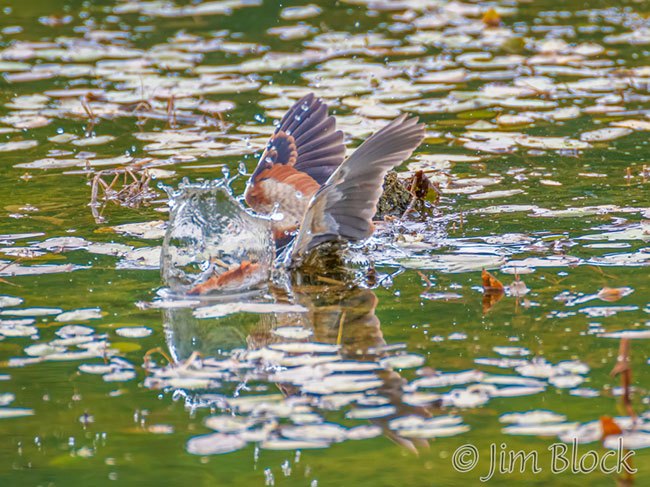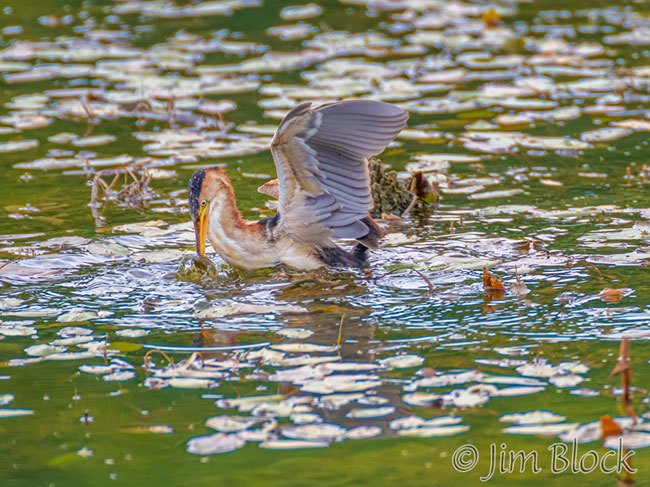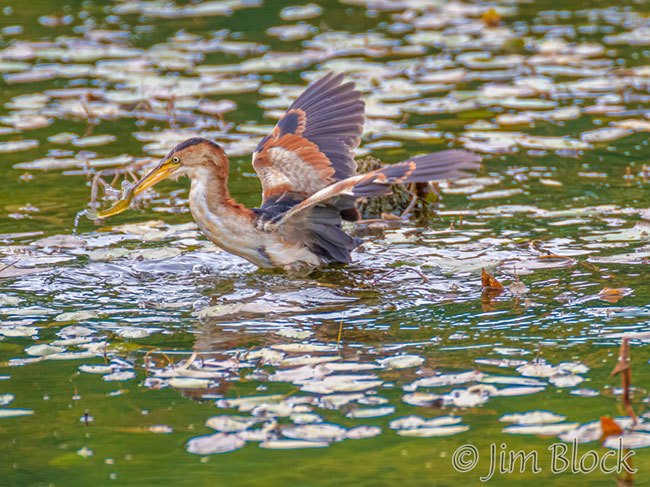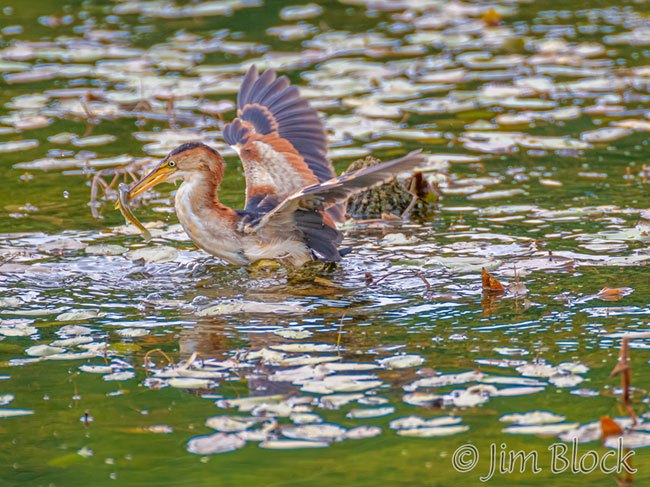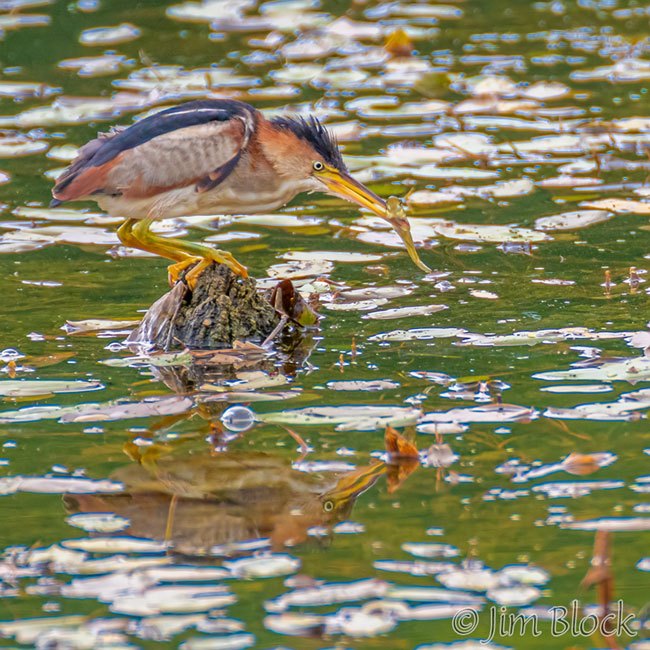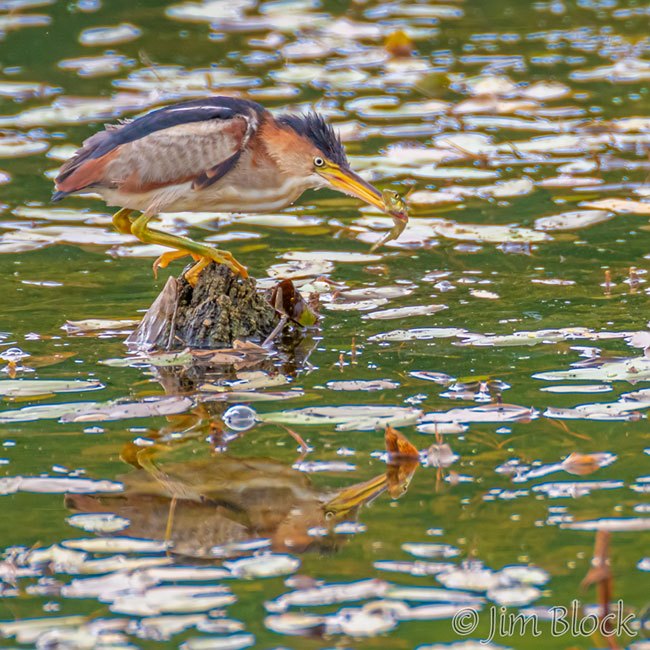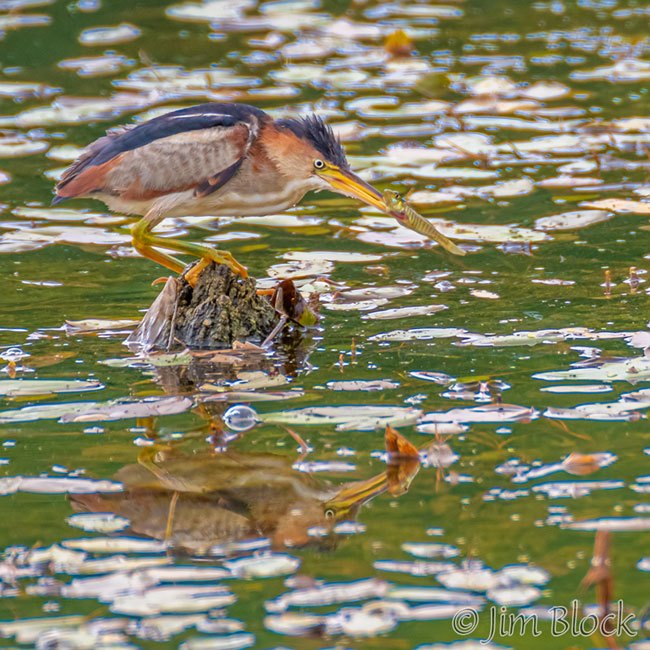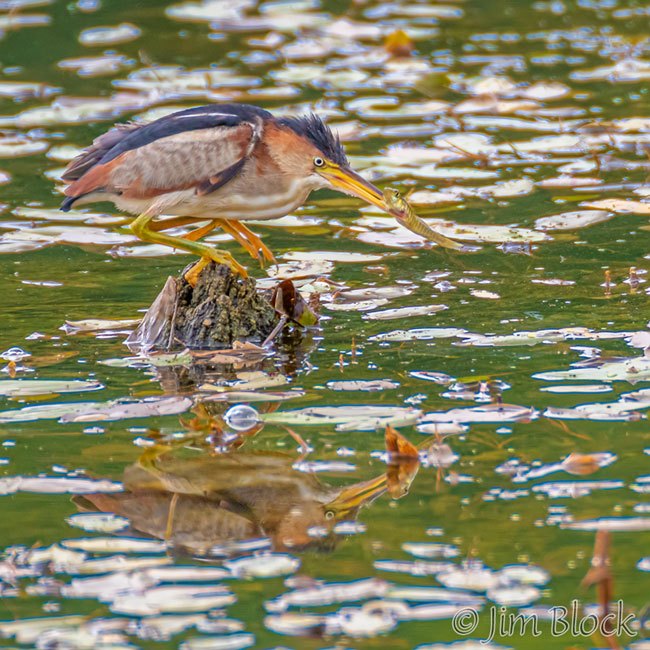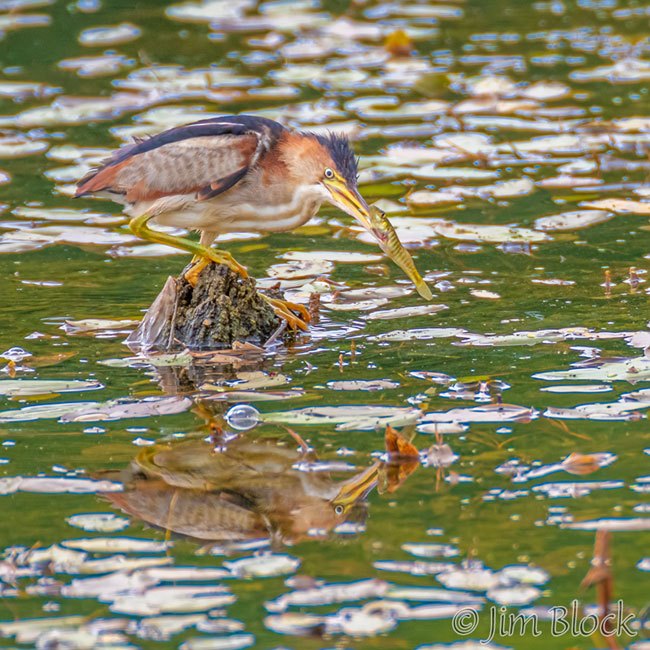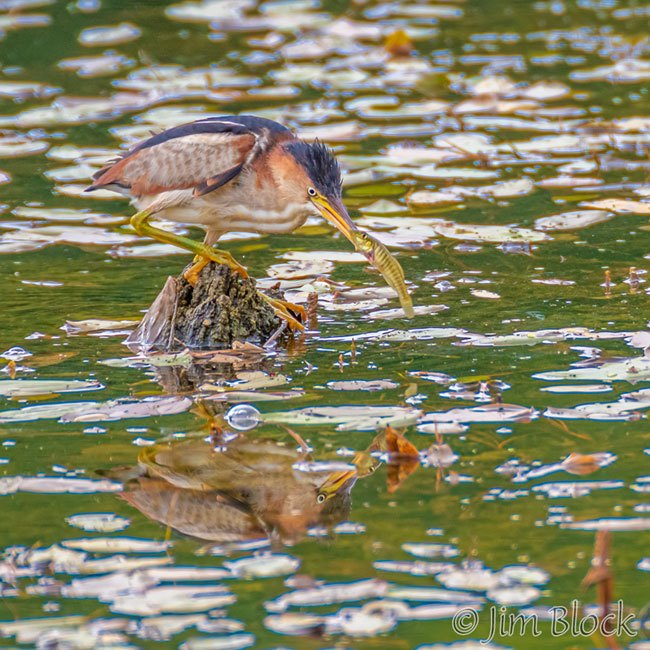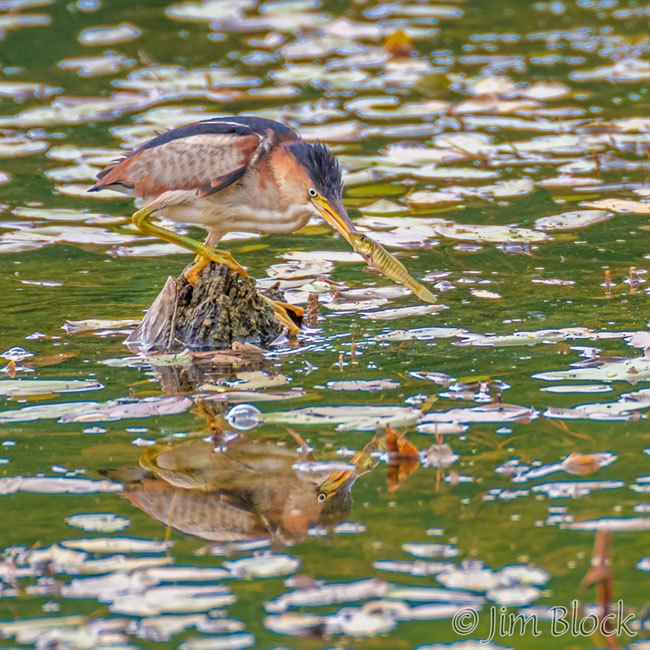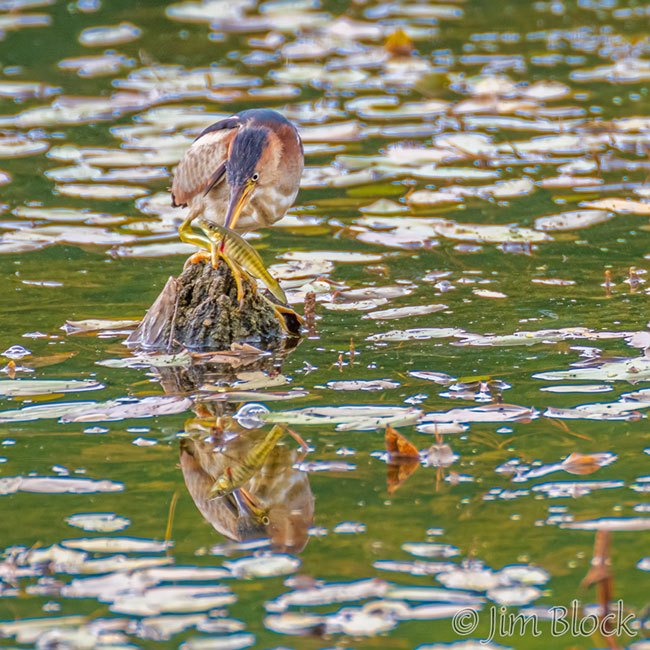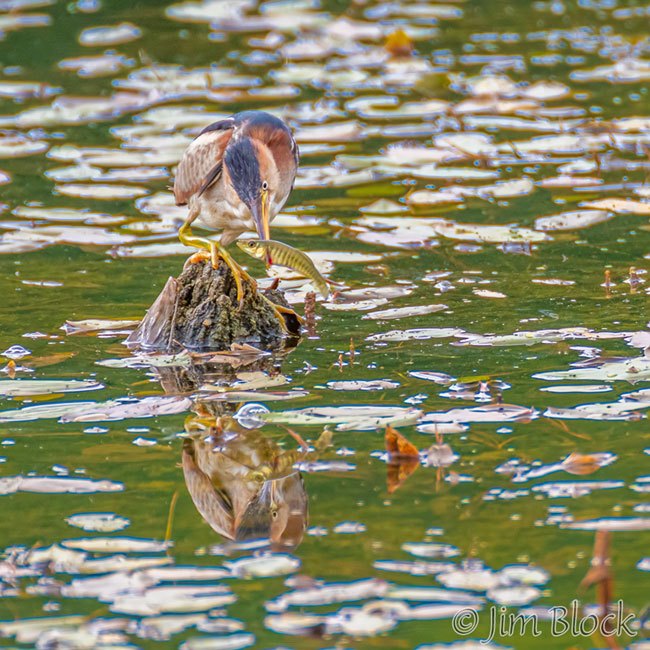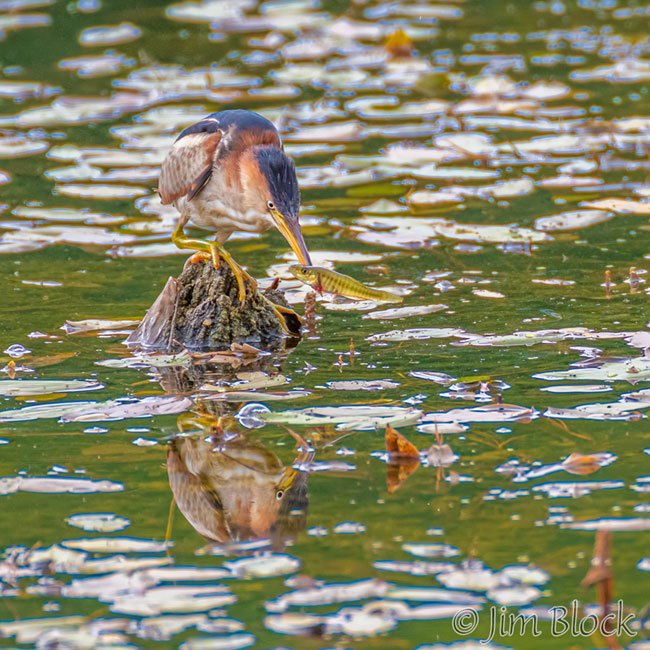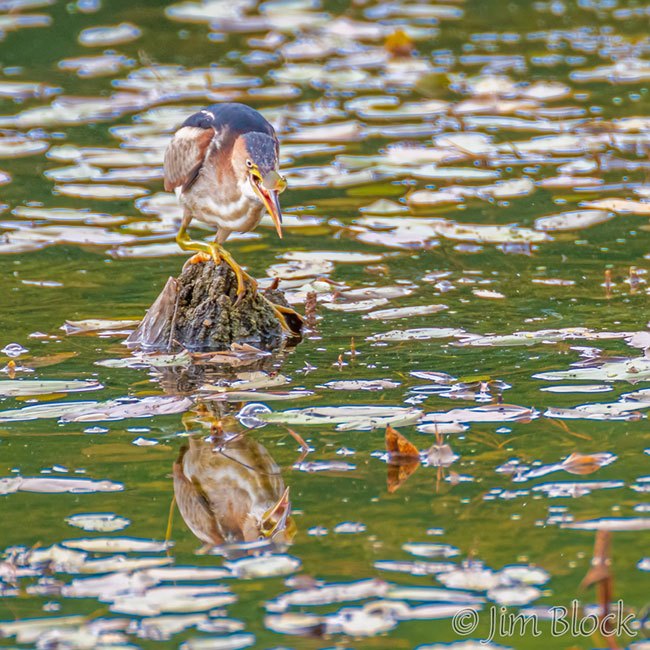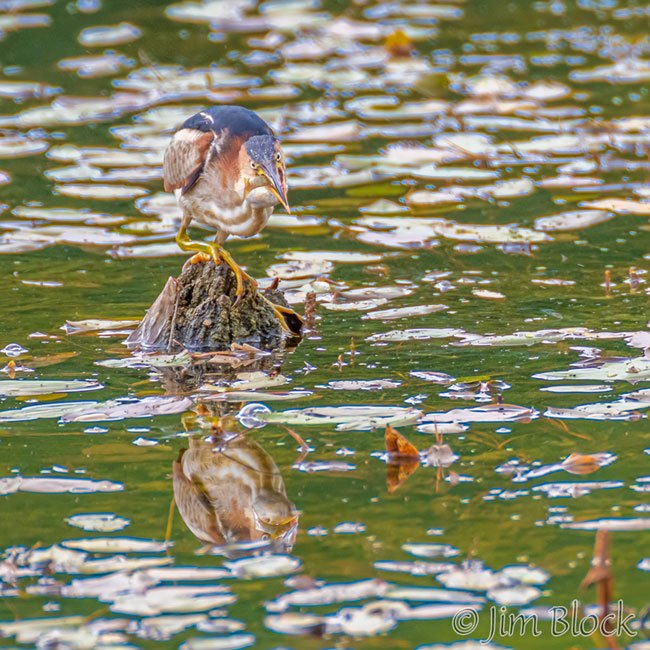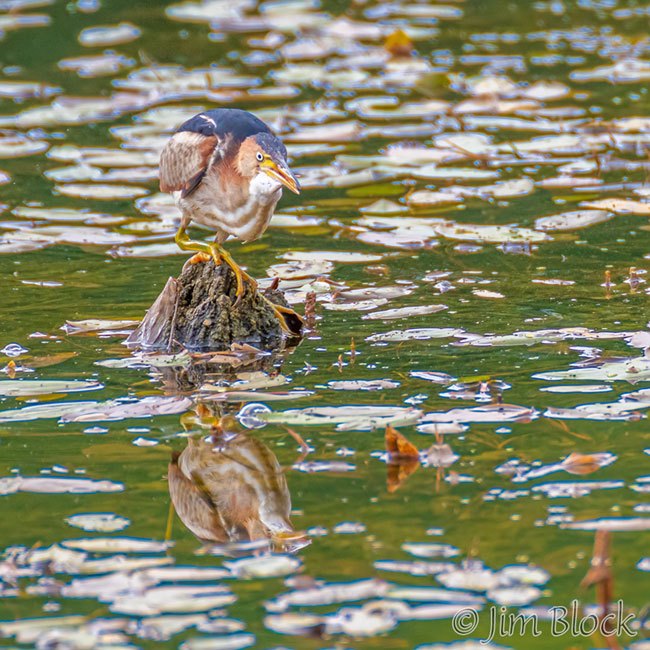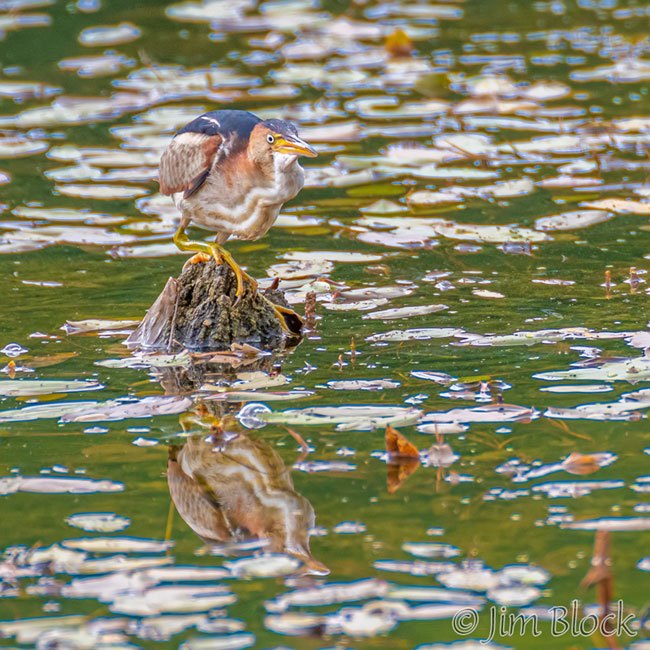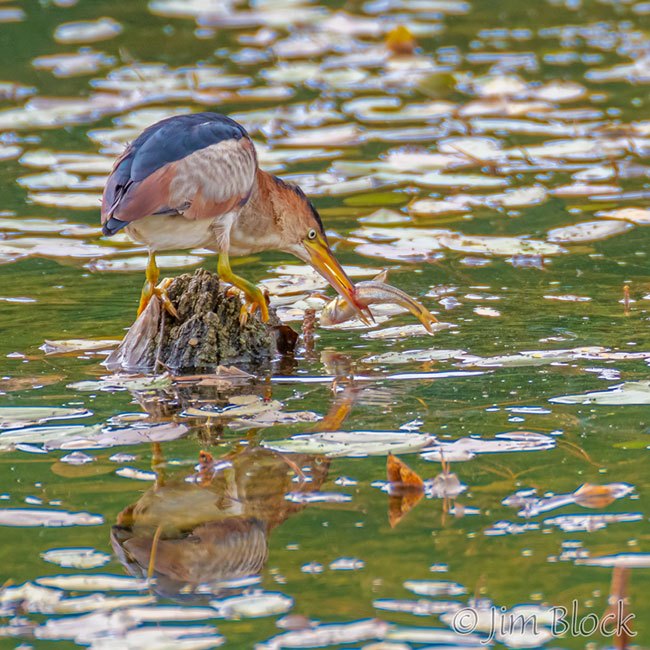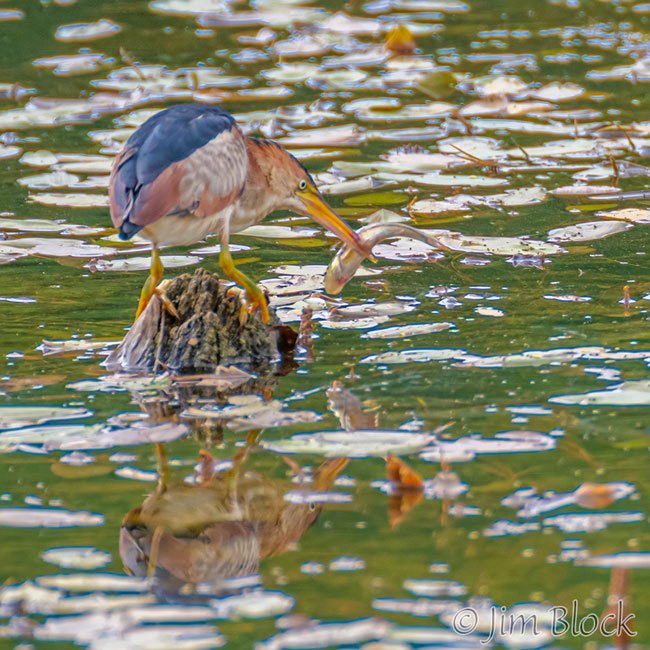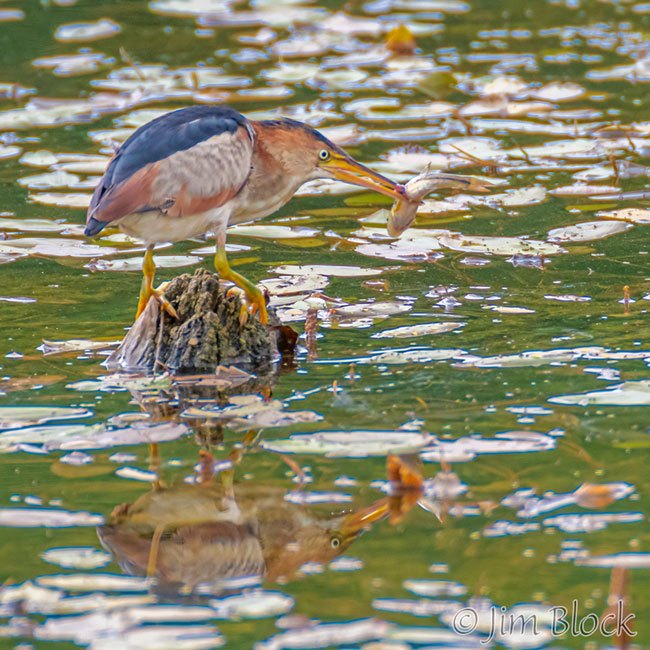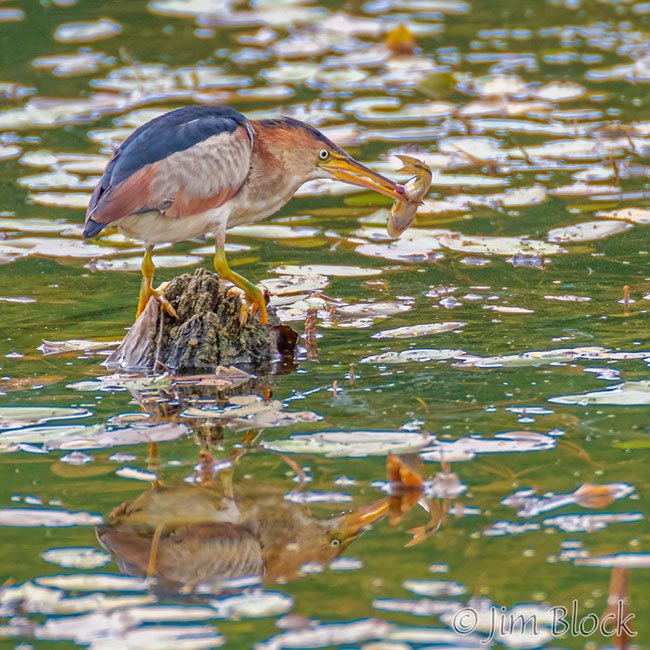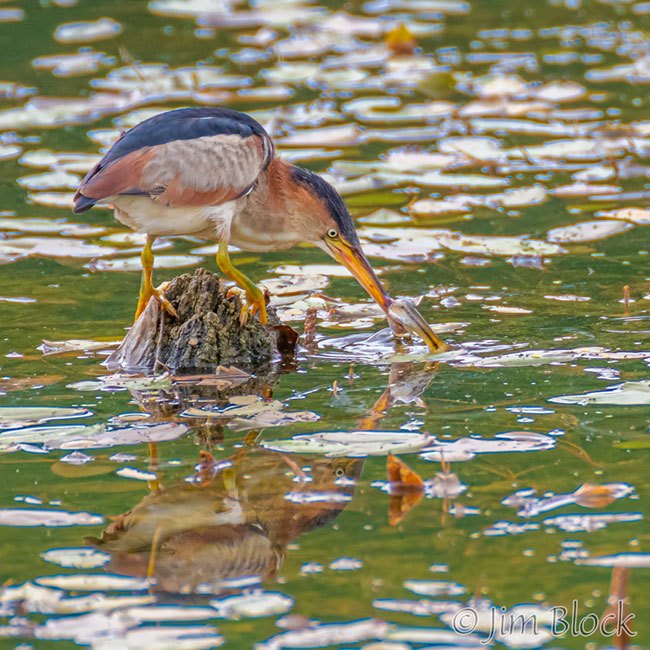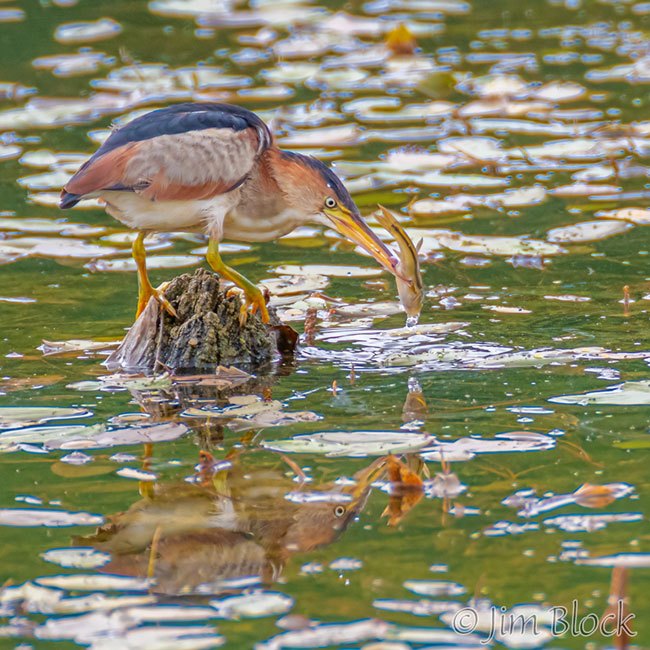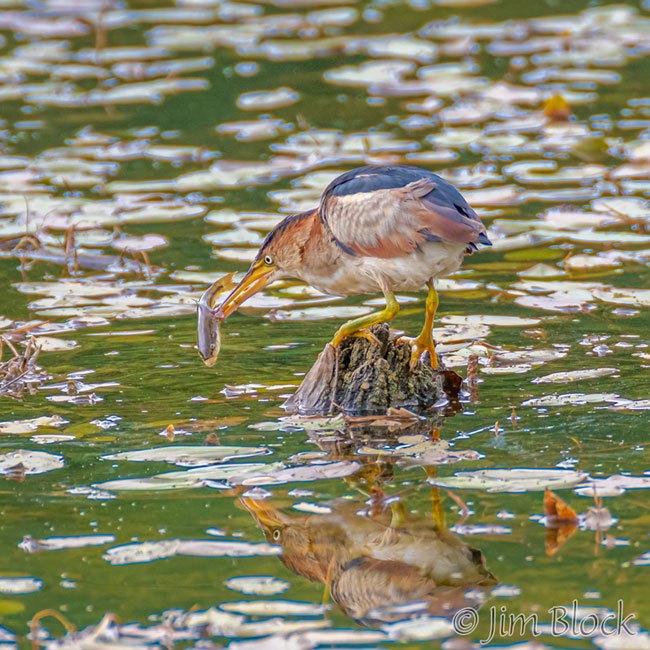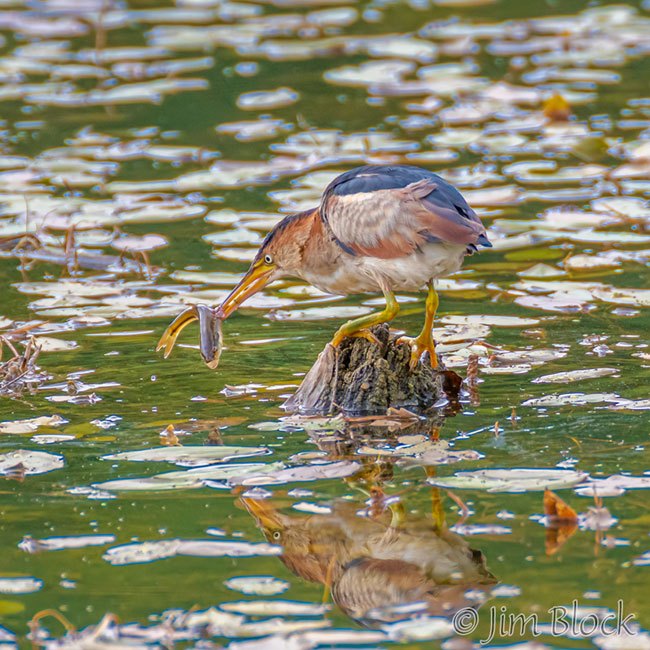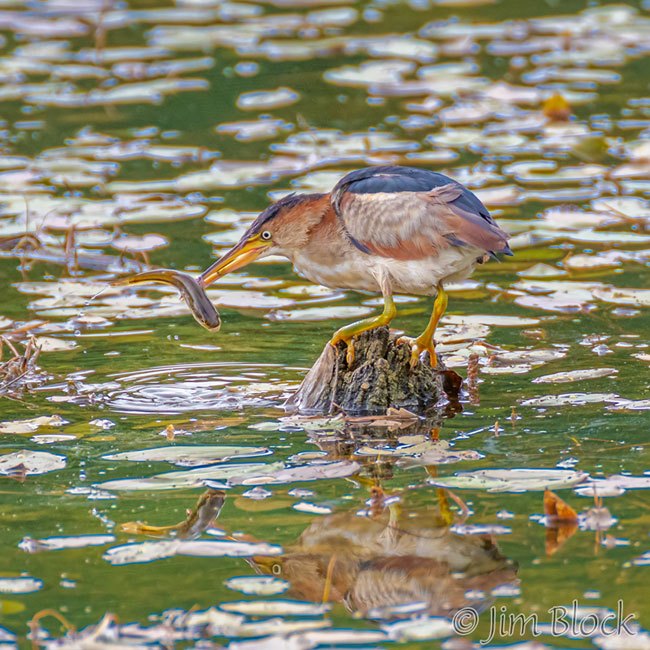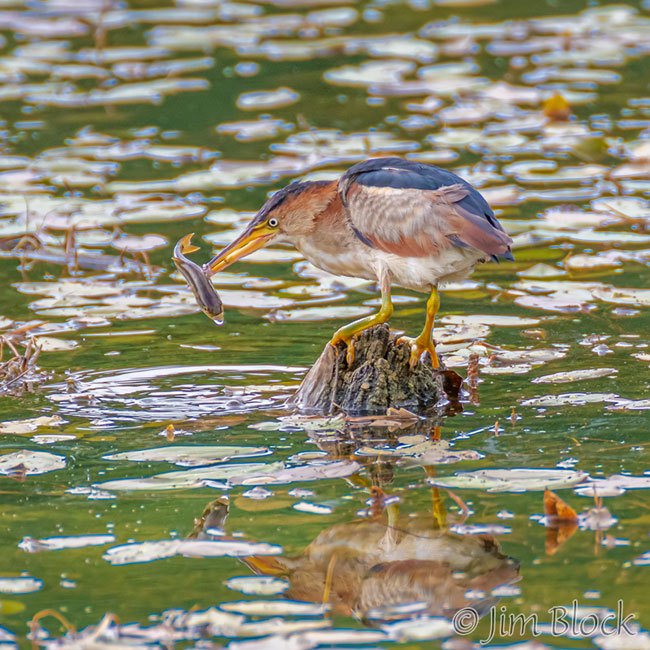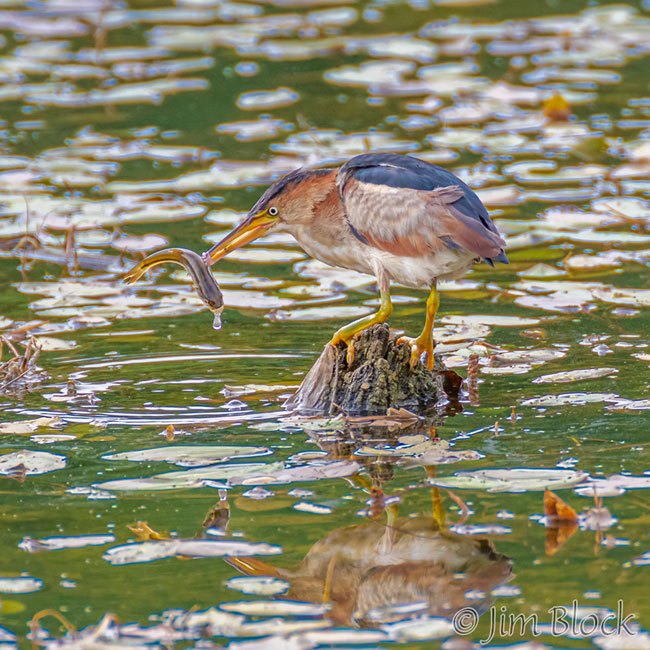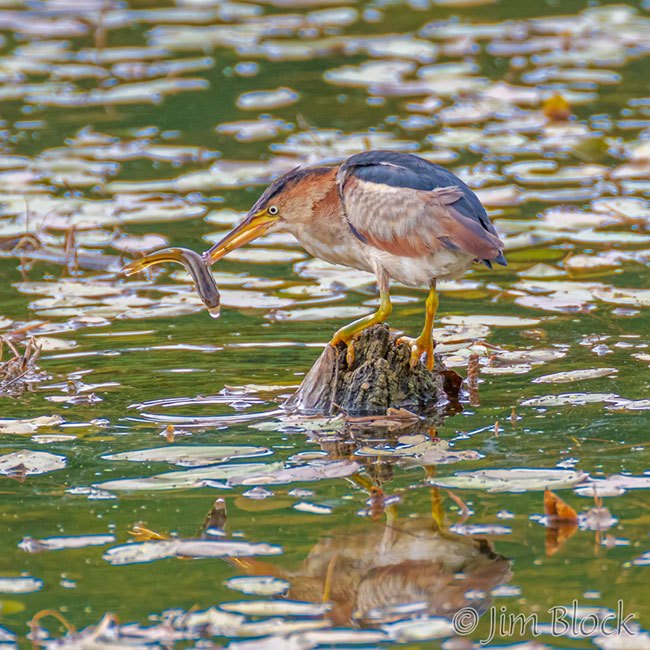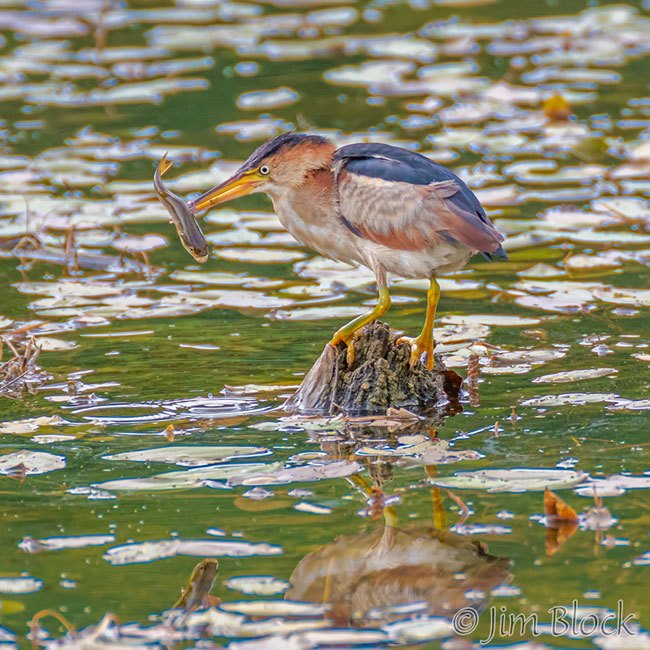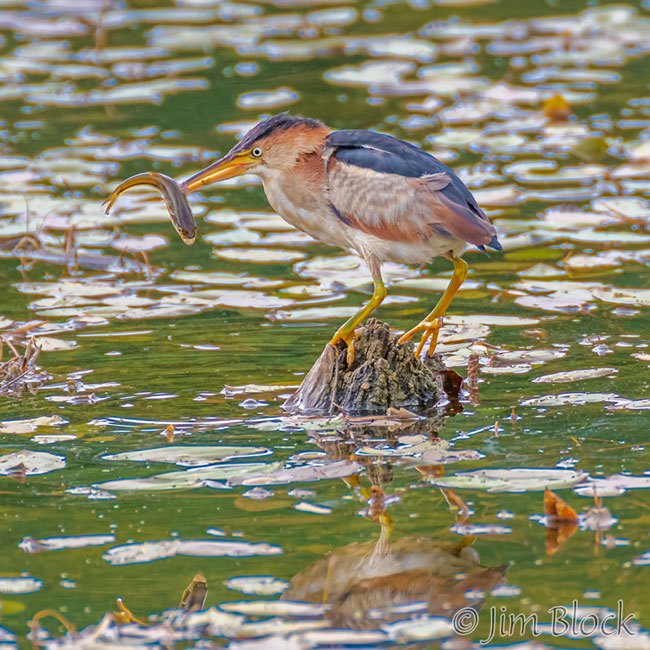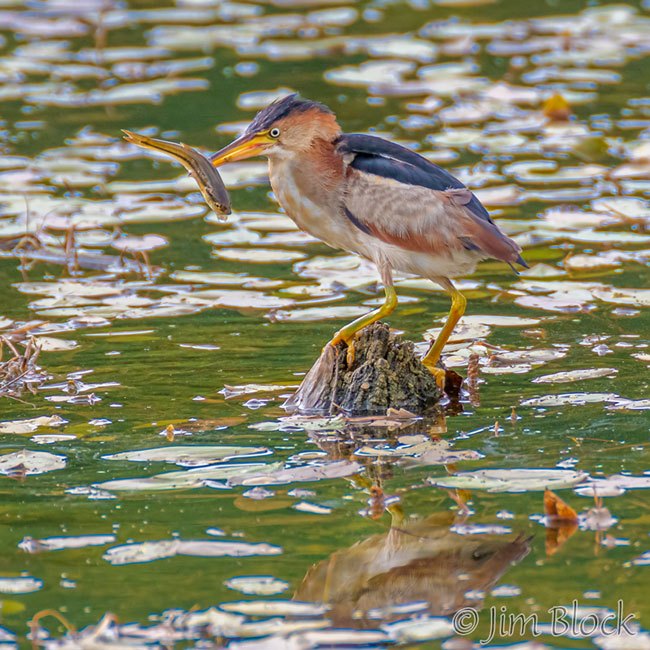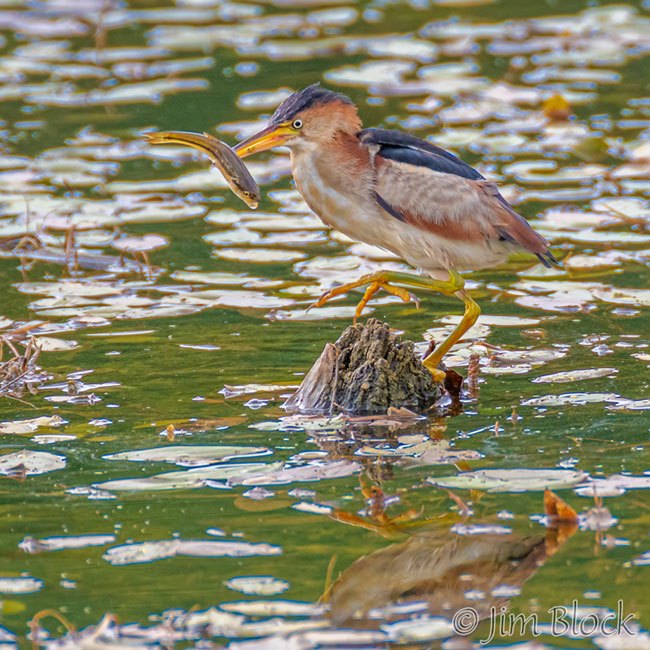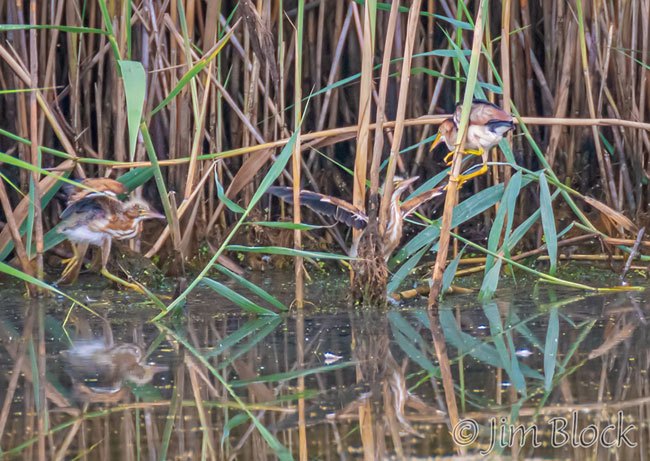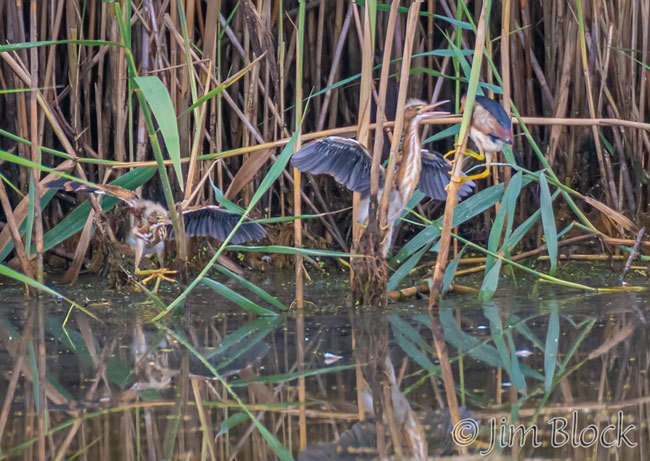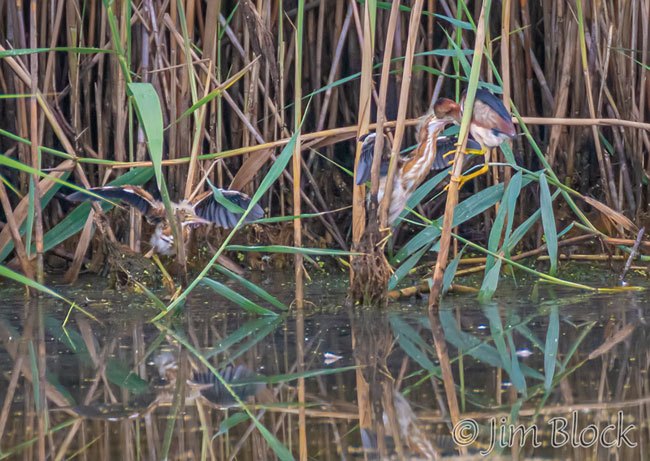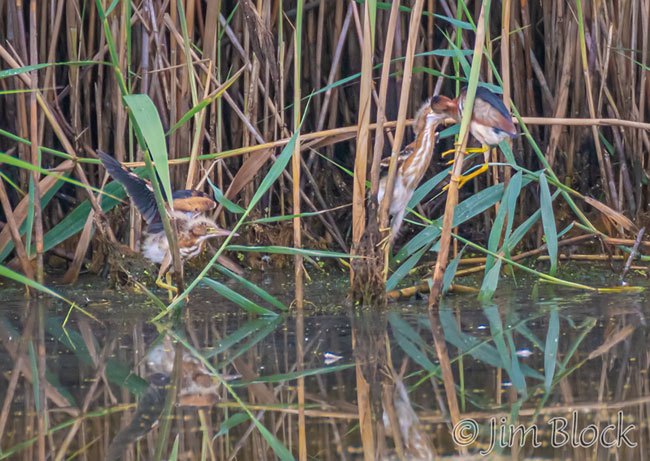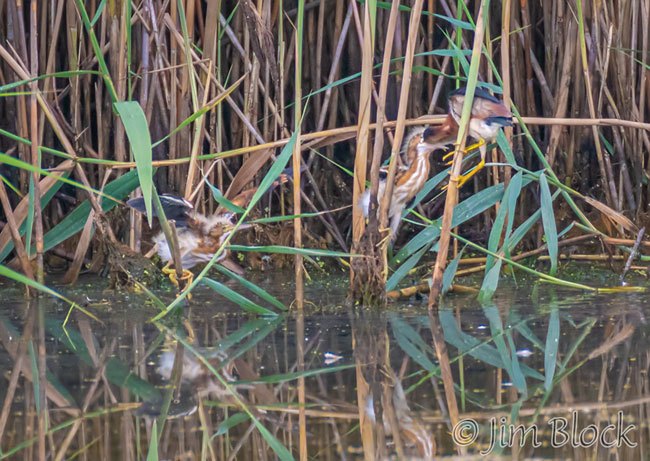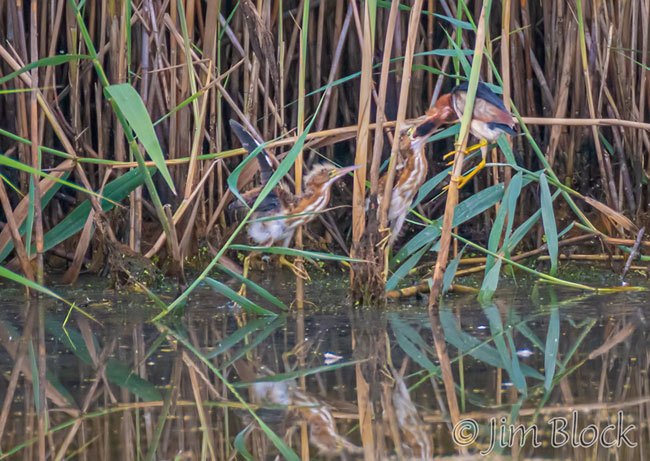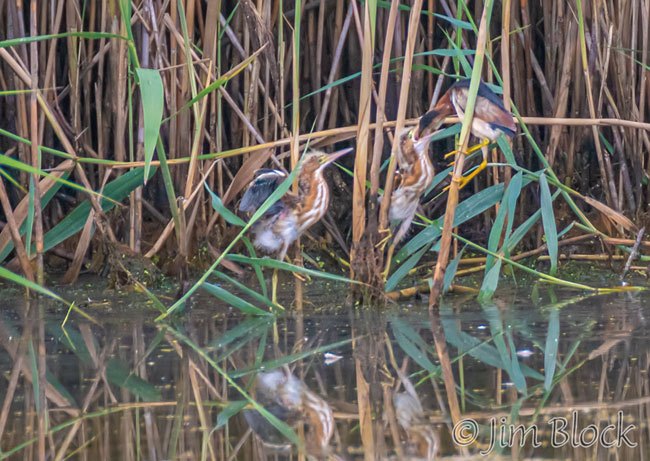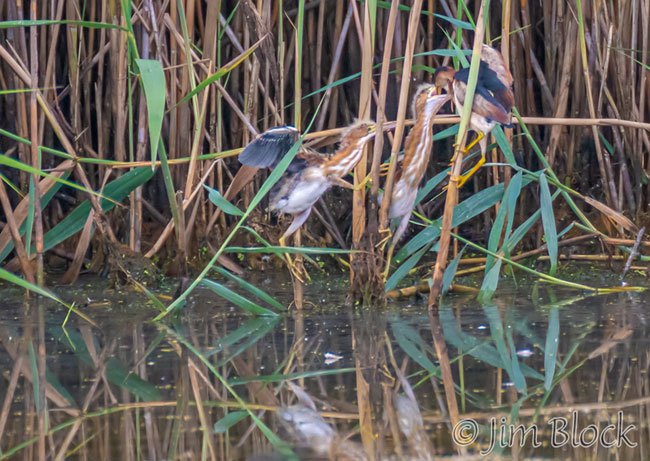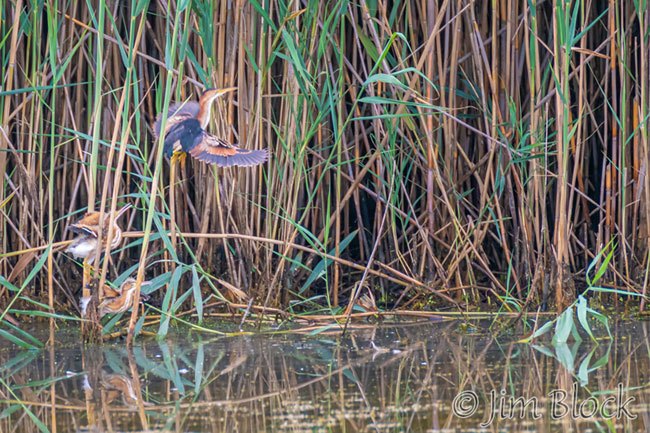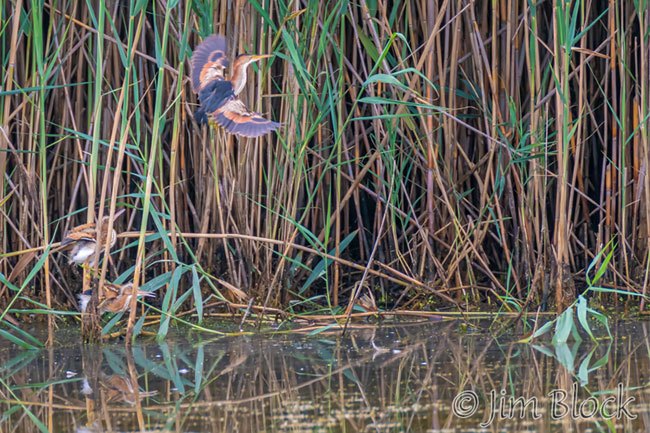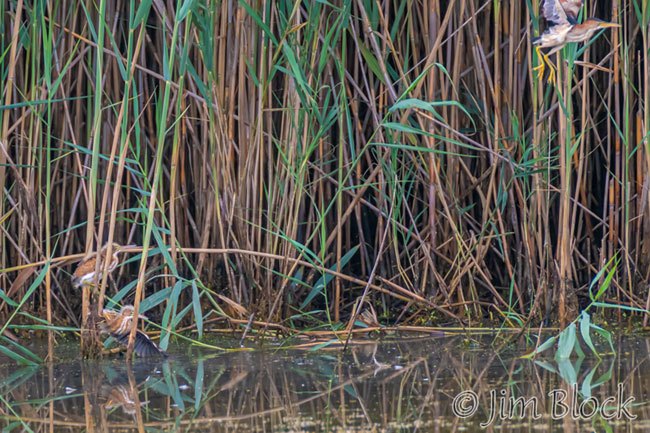Birders talk about a Big Day. They see how many species of birds they can identify in 24 hours. “Identify” doesn’t necessarily mean “see”. Hearing the bird is sufficient, but of course not for a photographer.
Friday, I had a BIG 20 minutes. Not because of the number of species, but because of the nonstop action.
I almost didn’t bother visiting the area. The day was very busy without adding any extra stops. But, I was shopping in the area, and at the last minute I decided to drop by the West Lebanon Wetlands (a.k.a. Cranberry Ponds) just to see if anything might be easily visible.
As I drove slowly past the opening to the pond, I spotted three heron species: a Green Heron low in the reeds very close to the near edge of the pond, a Least Bittern on a stump a bit farther out, and a Great Blue Heron fishing well across the pond. Guess I ought to stop.
I parked my car and grabbed a small but powerful, lightweight camera. Expecting the Green Heron would flush, since it was right below where I eventually wanted to stand, I slowly snuck up to it, taking a few shots through the reeds. When I moved carefully to get a better angle through the reeds, the Green Heron took off and flew to a dead tree far across the pond.
I ignored the Great Blue Heron; I have plenty of photos of that species. I turned my attention to the Least Bittern just as a Wood Duck cruised behind it.
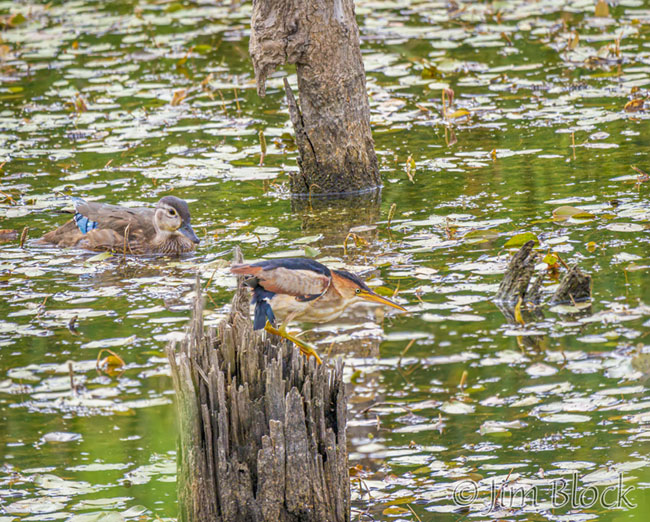
In an email to UVBirds on July 18, 2020, George Clark wrote:
“This morning at the now popular birding pond behind the Price Chopper/Walmart stores in West Lebanon, NH, I watched a foraging Least Bittern perched about 25 feet away on the top of an old stump projecting above the water. The tail of that Least Bittern was continually flicking from side-to-side, while the front end of that bird, including its bill, head, and wings, appeared immobile as though momentarily “frozen” in position.
“Some other herons, such as Great Blues and Greens, also often move the head, neck, and wings only very slowly when seeking prey. However, for these other species of herons I don’t recall ever having noted such a conspicuous movement of the tail as seen in this morning’s Least Bittern. It appeared as though the front end of the bird was being kept inconspicuous while the rear was waving like a small flag.
“A quick check of a few references on Least Bitterns turned up no mention of such tail movements by foraging birds. However, wing-flicking by foraging Least Bitterns, a behavior which I have not seen, has been considered as one means for attracting prey as reported in the online Birds of the World account from Cornell Laboratory of Ornithology.
“I’m wondering whether tail movements of the Least Bittern might also serve as a lure to attract nearby prey. Could it be that, from the viewpoint of a fish or other potential prey, a waving tail looks a lot less menacing than a moving beak or eyes?”
I replied, privately to George the same day, “I just now looked at a long sequence of photos of the Least Bittern on the stump before it dove for a fish. Its head kept moving from side to side as it scanned the water, but I did not see any tail movement.”
George responded:
“Your finding no tail movement is interesting. One interpretation might be that behaviors such as the tail movements and wing flicking are used only at certain times during foraging, and that the bird you photographed in the long sequence was following still another strategy. It might take a lot more observing and photography to check on this. Another alternative might be that the tail movements are not directly connected with foraging.”
Well, a few minutes into my big 20 minutes, it was very obvious that this bittern was wagging its tail a lot. In fact you can see its tail “flag” is rotated to its right in the photo above.
I was instantly reminded of how loons lift a leg and shake it. The flag of the bittern tail looked like the web feet of a loon. I doubt loons shake their feet to lure fish, but perhaps George is correct and Least Bitterns do with their tail.
Here is a sequence of tail flicking. This sequence, and all the others, show much better on a computer that is “larger” than an iPad or phone, since the images will blend smoothly into each other on a big monitor rather than moving from side to side on an iPad. If you wish, you can click the center of any photo in a show to pause it and then step through the images at your own pace.
The bittern flew to another stump.
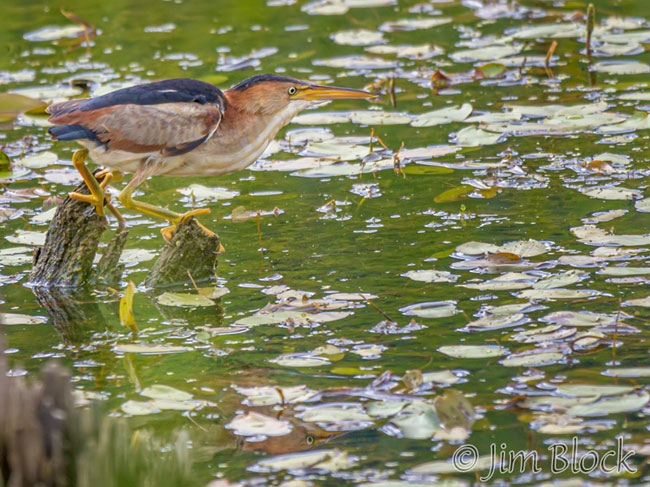
Out of the corner of my eye I saw the Great Blue Heron launch. I turned and got some quick photos of it departing the pond. It would have been nice if the heron had given me a chance to switch to a faster shutter speed.
It appeared that the bittern might stay put for a while. They certainly seem to ignore humans. So I got a much larger camera and lens and a heavy tripod out of my car. When I returned the bittern was still on the stump.
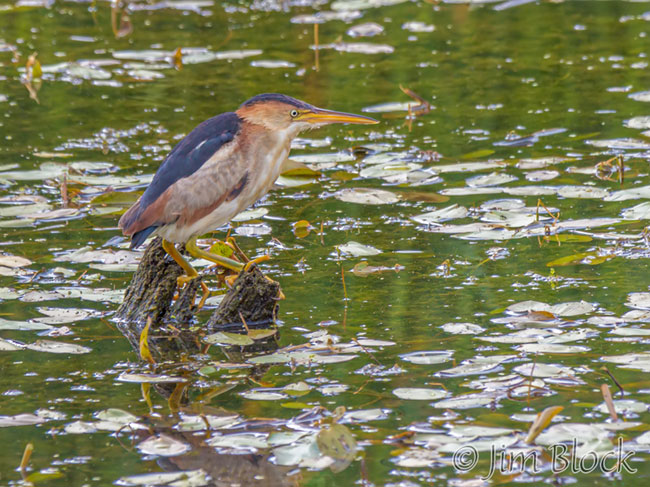
But two minutes later it flew to another stump.
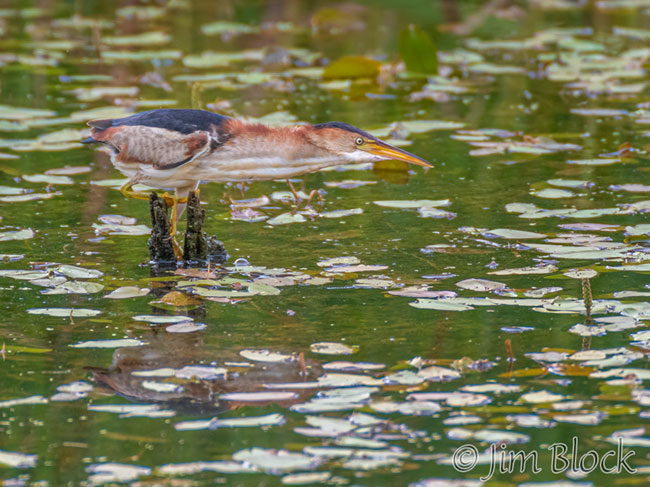
It took almost no time for the bittern to grab a very tiny fish from its new fishing pier.
Here is a highly cropped photo of the tiny fish. These guys must have very good eyesight.
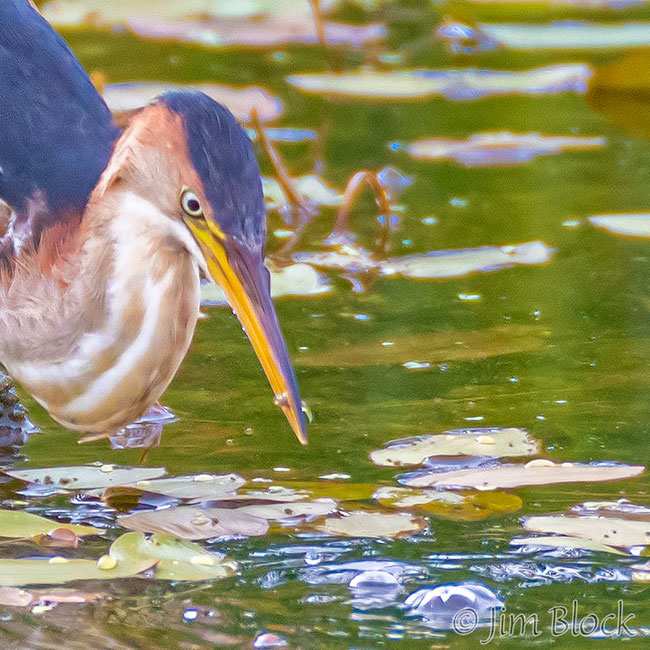
The bittern then left for yet another stump. The water was a bit lower than earlier in the season and thus there were more stumps available as fishing perches.
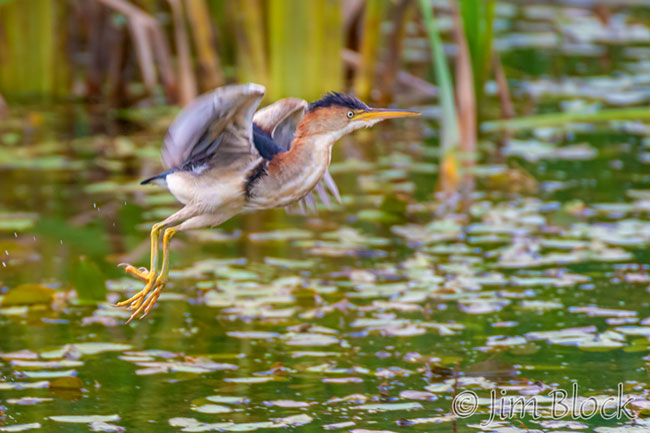
From this stump the bittern made an unsuccessful foray.
Then the bird decided to turn around.
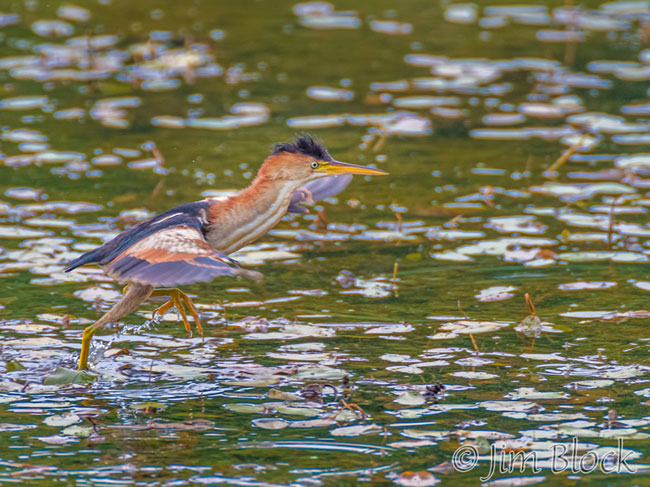
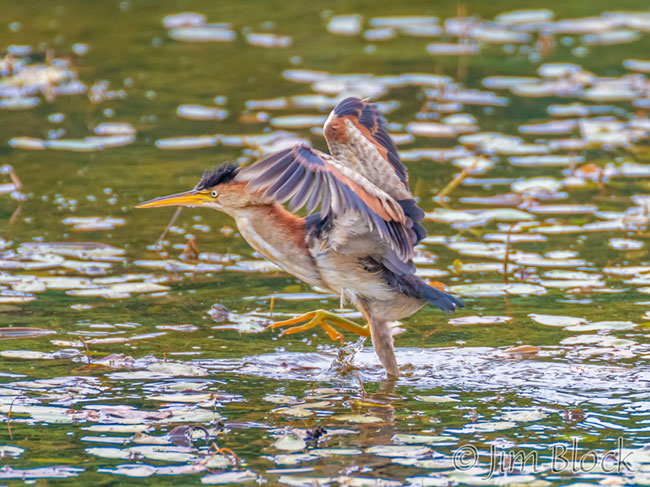
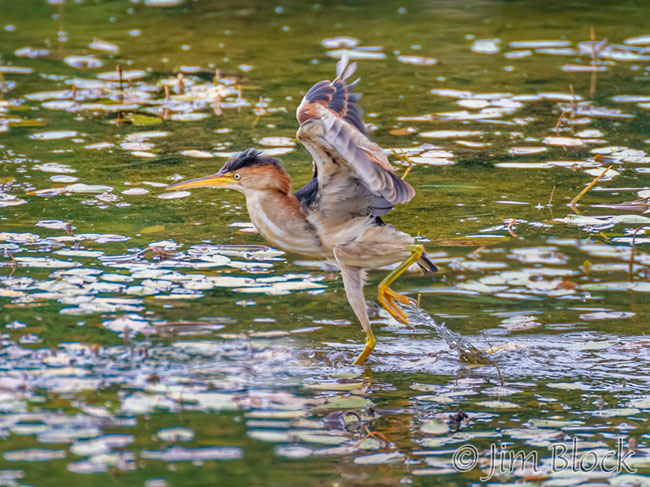
Failing to get a fish, the bittern engaged in some tail wagging.
Perhaps the bittern below was wing-flicking to attract prey as George mentioned in the email quoted above. The bittern did not leave its post. I got a number of other photos of strange wing movement without the bittern launching in flight.
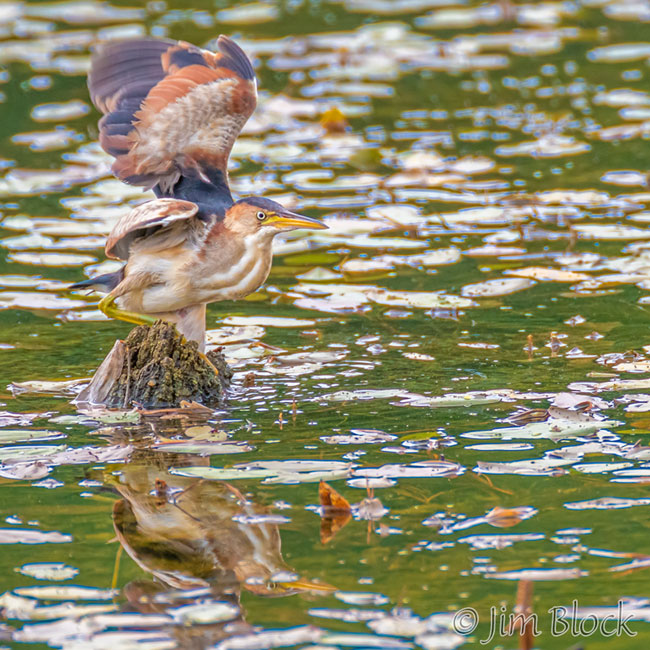
This perch proved to be the best spot. Here the bitten grabs a Belted Killifish …
… and returns to its perch to enjoy it.
Two minutes later the bittern caught a second large fish — a Creek Chub. It perched mostly facing away from me. However, I did get some photos as it dunked the fish in the water to the right and left. Here is a sequence to the right.
Here is a sequence of the bittern with the fish on the left side.
The bittern did not seem to be able to get the Creek Chub in a good position to swallow. It flew, carrying it, and landed very close to me in the reeds to the left below my feet. Although it was very close, it was impossible to see it in the dense vegetation.
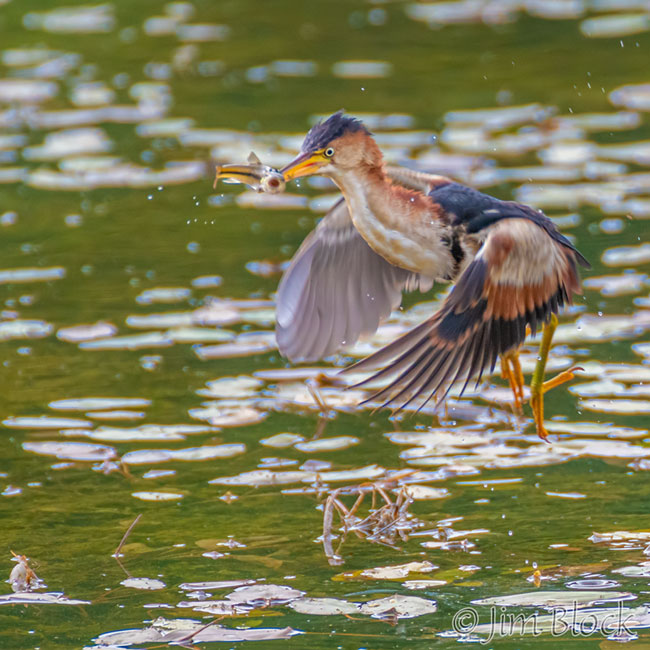
Two minutes later it flew across the pond. Here it is approaching the phragmites on the opposite side. Note that you cannot see any juvenile Least Bitterns in this photo.
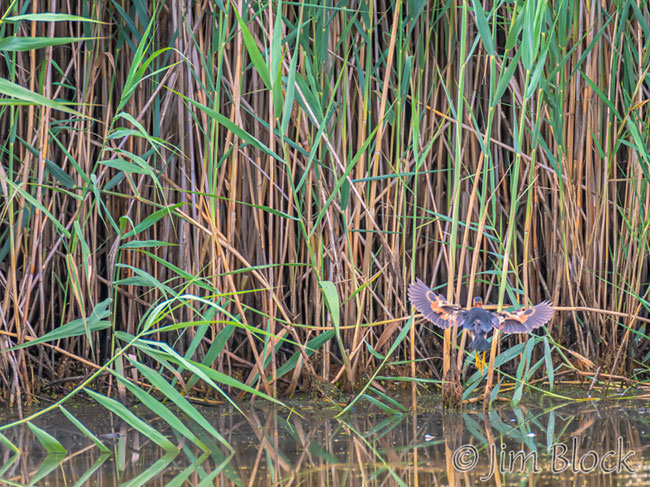
But ten seconds later a pair of juveniles appeared. The adult obviously knew exactly where to fly. Here is a sequence of one juvenile getting fed.
It appeared that the second juvenile did not reach the parent in time before the parent departed.
I had already spent more than my allotted time for shopping. So after about 20 minutes I reluctantly packed up and left. I’ve been at this spot in the past for several hours at a time and got little. Sometime one just gets lucky.
Eleven days earlier I got lucky with Comet NEOWISE. You can see those photos if you CLICK HERE.

